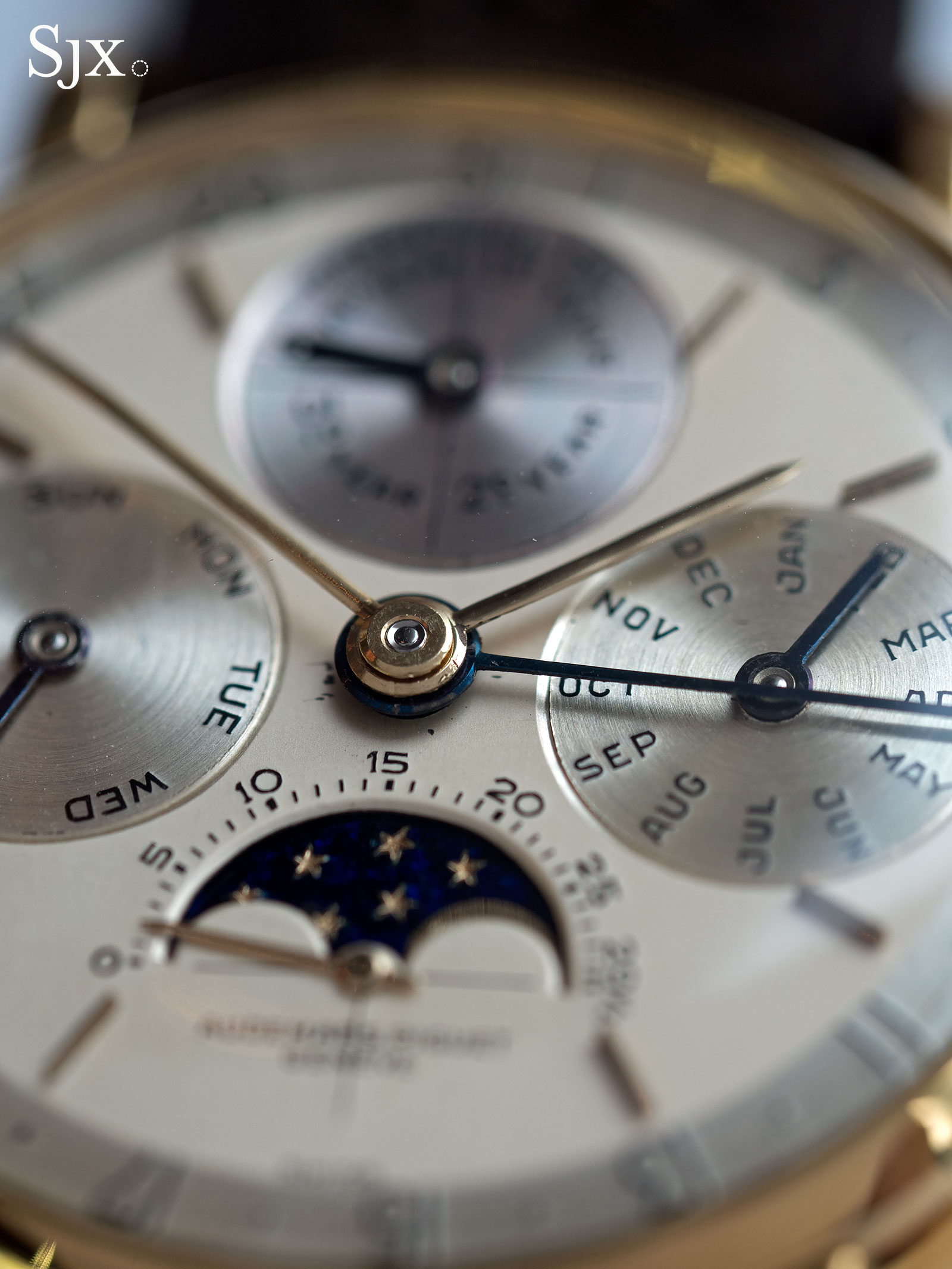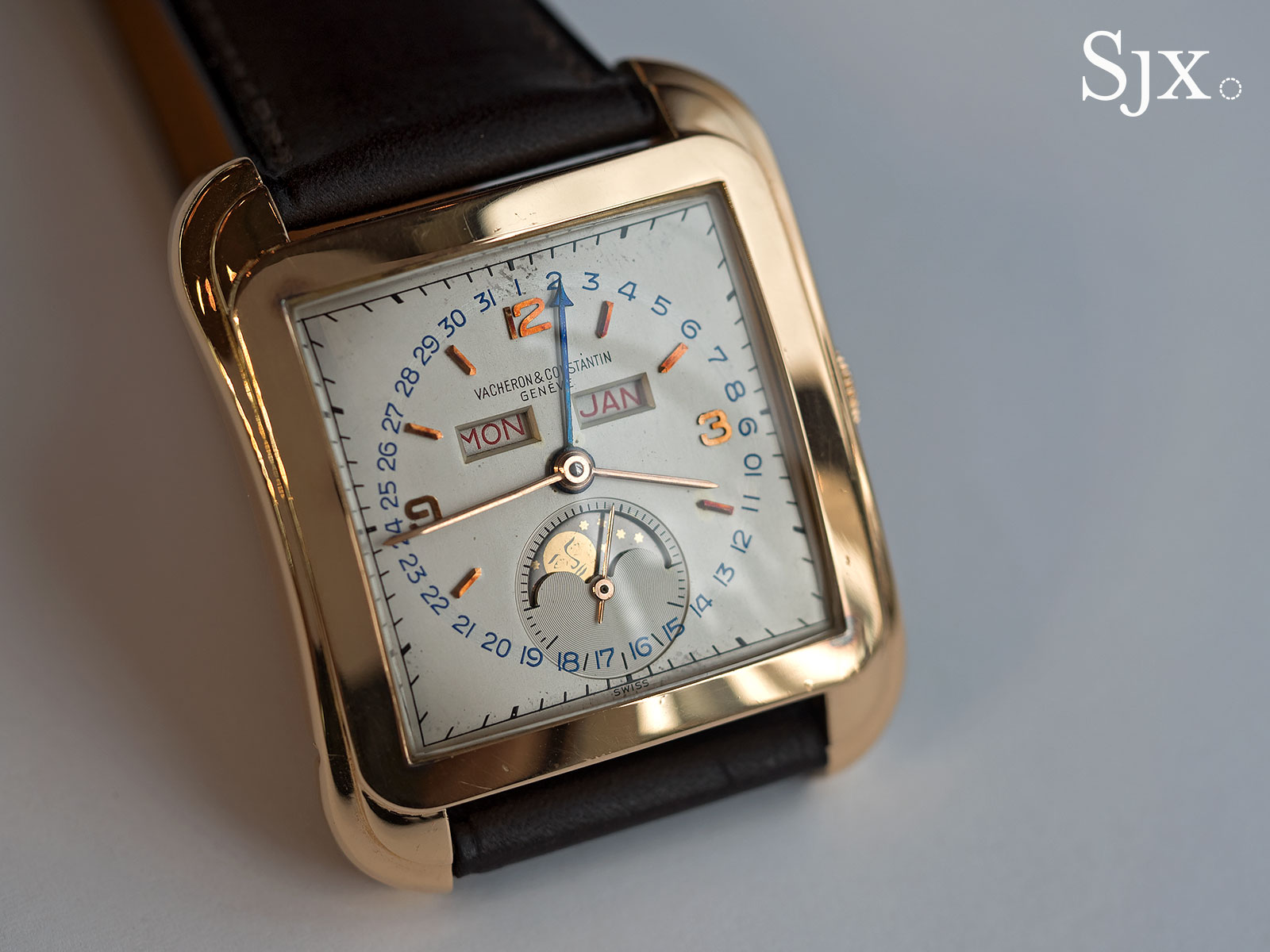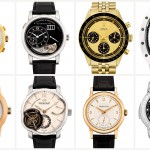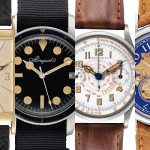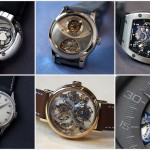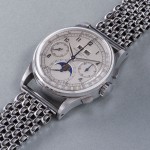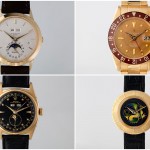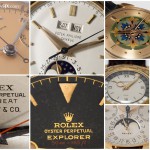Eight Choice Picks from Phillips’ New York Watch Auction
From the great to the peculiar.With the grand title Winning Icons – Legendary Watches of the 20th Century, Phillips auctioneers’ inaugural watch sale in New York promises much. And it will likely a stellar affair thanks to Paul Newman’s very own Rolex Daytona, which will inevitably be the most valuable lot in the sale, though not perhaps the most intrinsically appealing.
The other 49 watches in the 50-lot sale are also compelling. Here’s eight of most interesting.
Lot 10 – Rolex Daytona ref. 6265/3 two-tone
Definitely rare, perhaps one of a kind, and maybe very valuable, the Rolex Daytona ref. 6265/3 in steel and gold is not classically handsome. It looks unlike any other vintage Daytona because it’s probably the only one ever made in steel and gold. The one-off model reference of “6265/3” bestowed by Rolex USA testifies to its uniqueness.
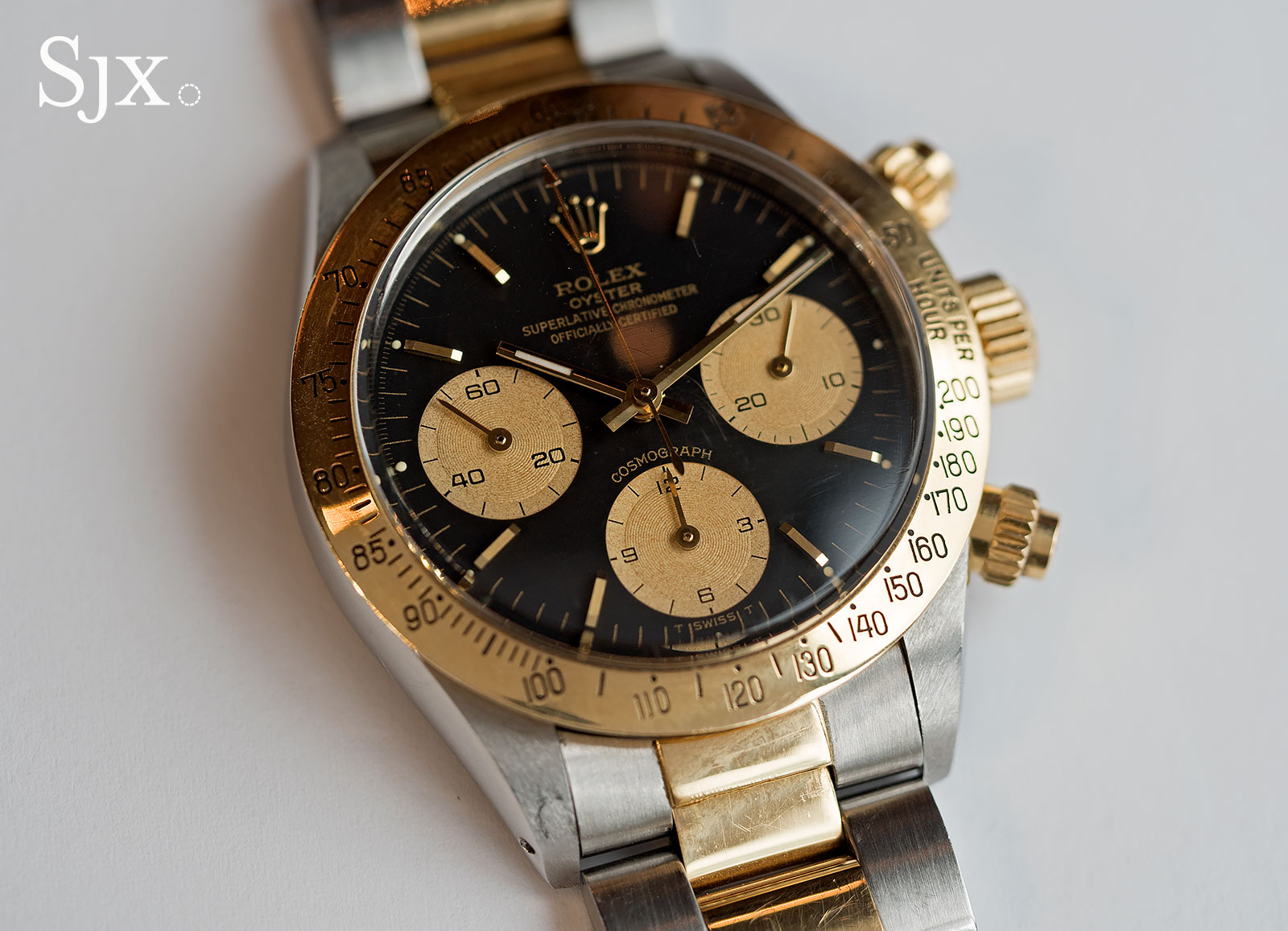
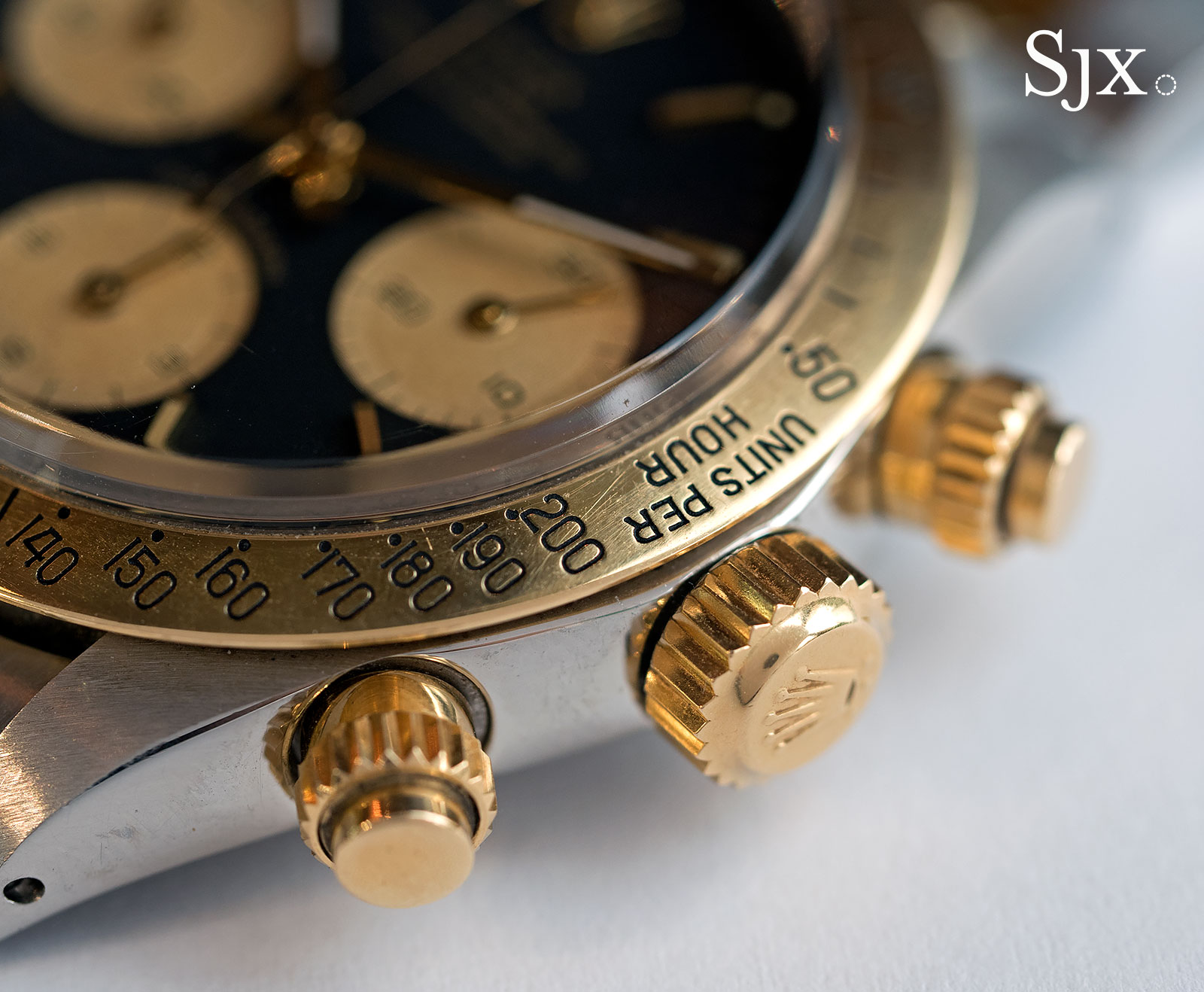
The “two-tone” Daytona was the result of a request from waste disposal millionaire turned auto racer Bruce Leven, who passed away almost exactly a month ago. He was offered any watch by Rolex USA on the occasion of him acquiring a prototype Porsche race car, and he chose one that wasn’t in the catalogue.
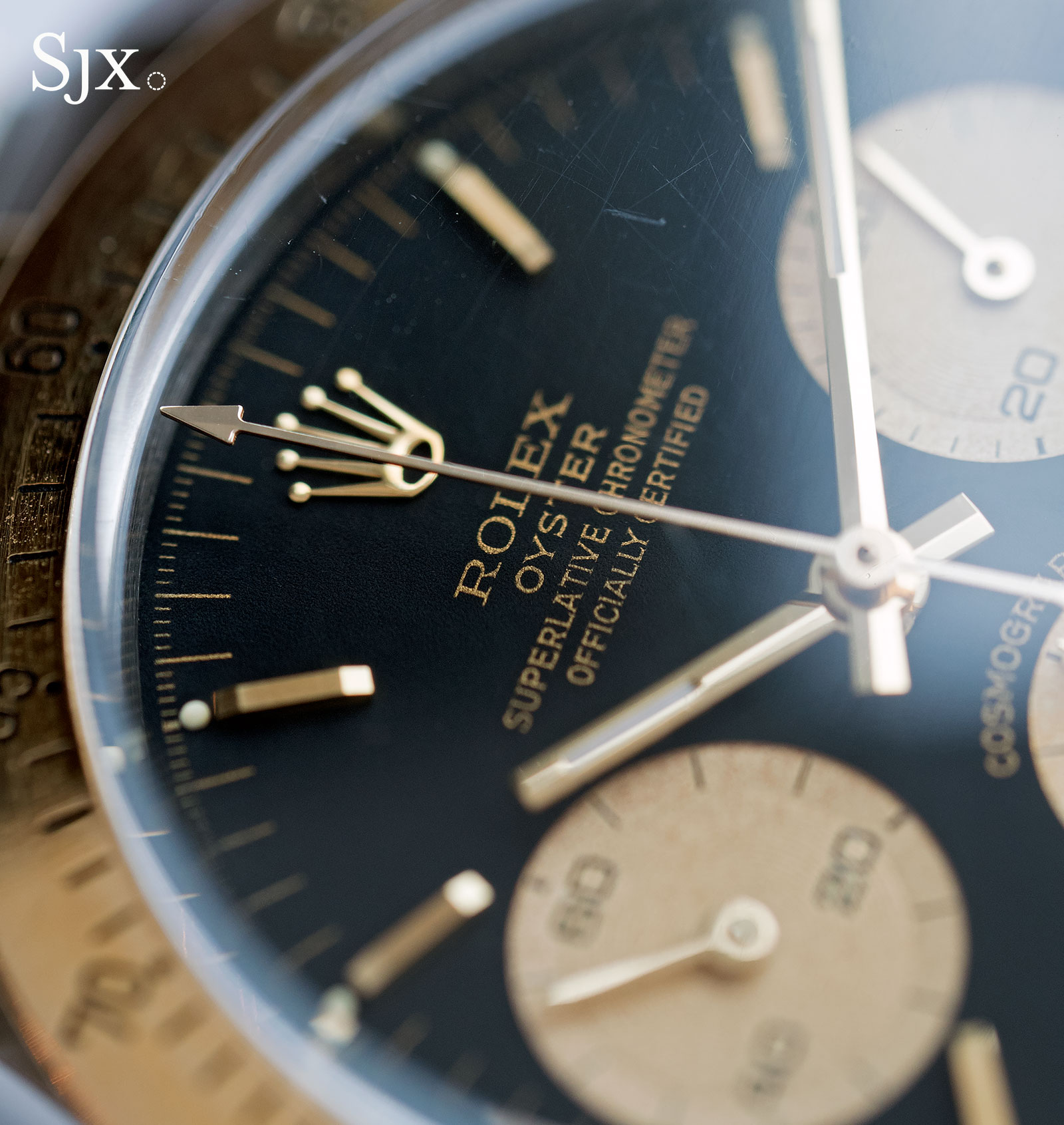
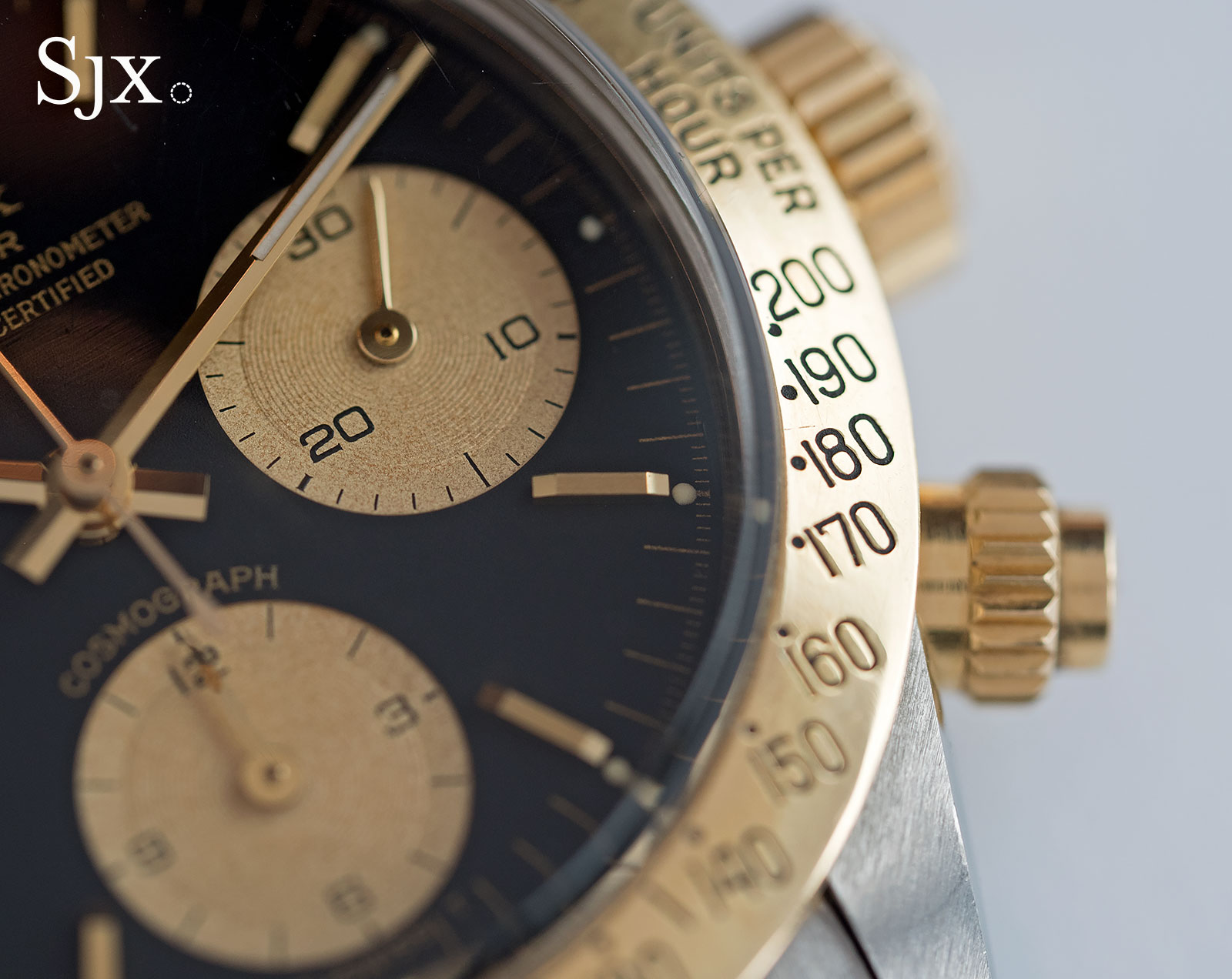
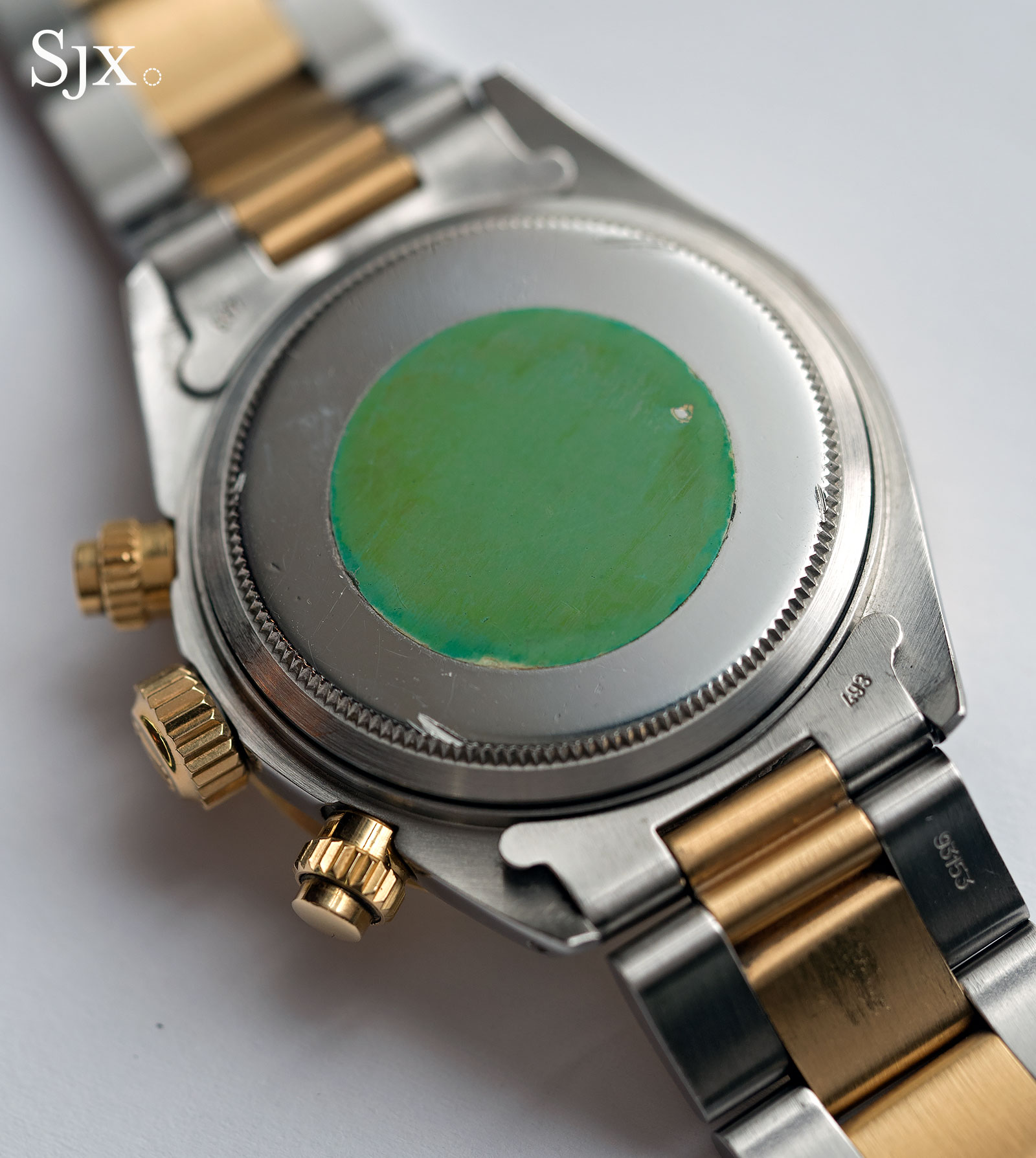
Rolex USA put together the watch for him, rather than the mothership in Geneva. Whether that has any effect on its value will be determined soon. This carries an estimate of US$100,000 to US$200,000.
Lot 13 – Cartier “London” Crash
The original Cartier Crash originated at the jeweller’s London branch in 1967; this watch is London example from the late 1980s, which is almost as good.
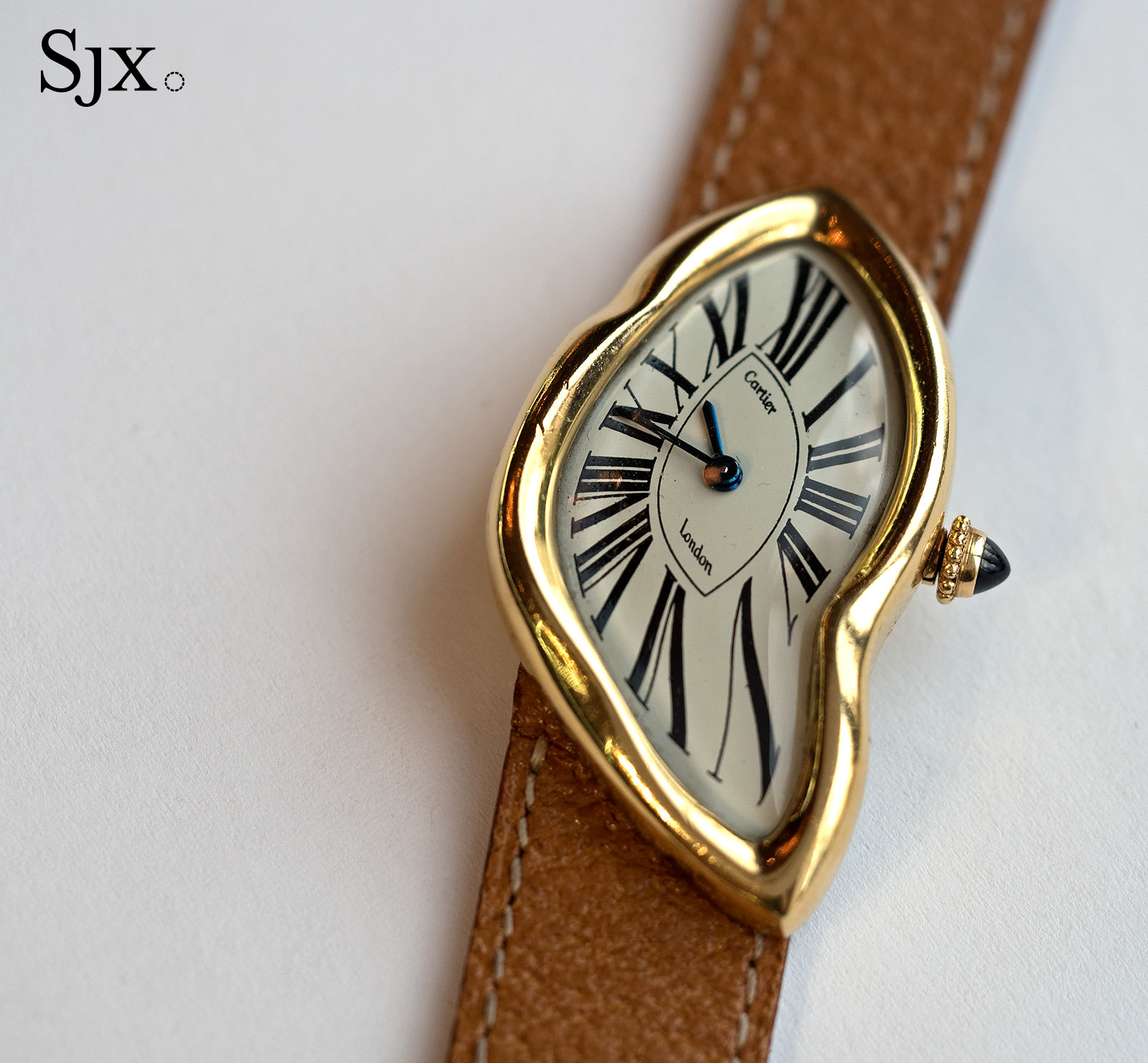
Larger than today’s version of the iconic asymmetrical watch, this “London” Crash has several details that reveal it to be a creation from Cartier’s London branch.
The most obvious are the English precious metal hallmarks on the back, but more important is the adjacent “JC” stamp, which is short for Jacques Cartier. He was one of the three Cartier brothers – sons of the firm’s founder – and the sibling who took charge of the London branch in 1909.
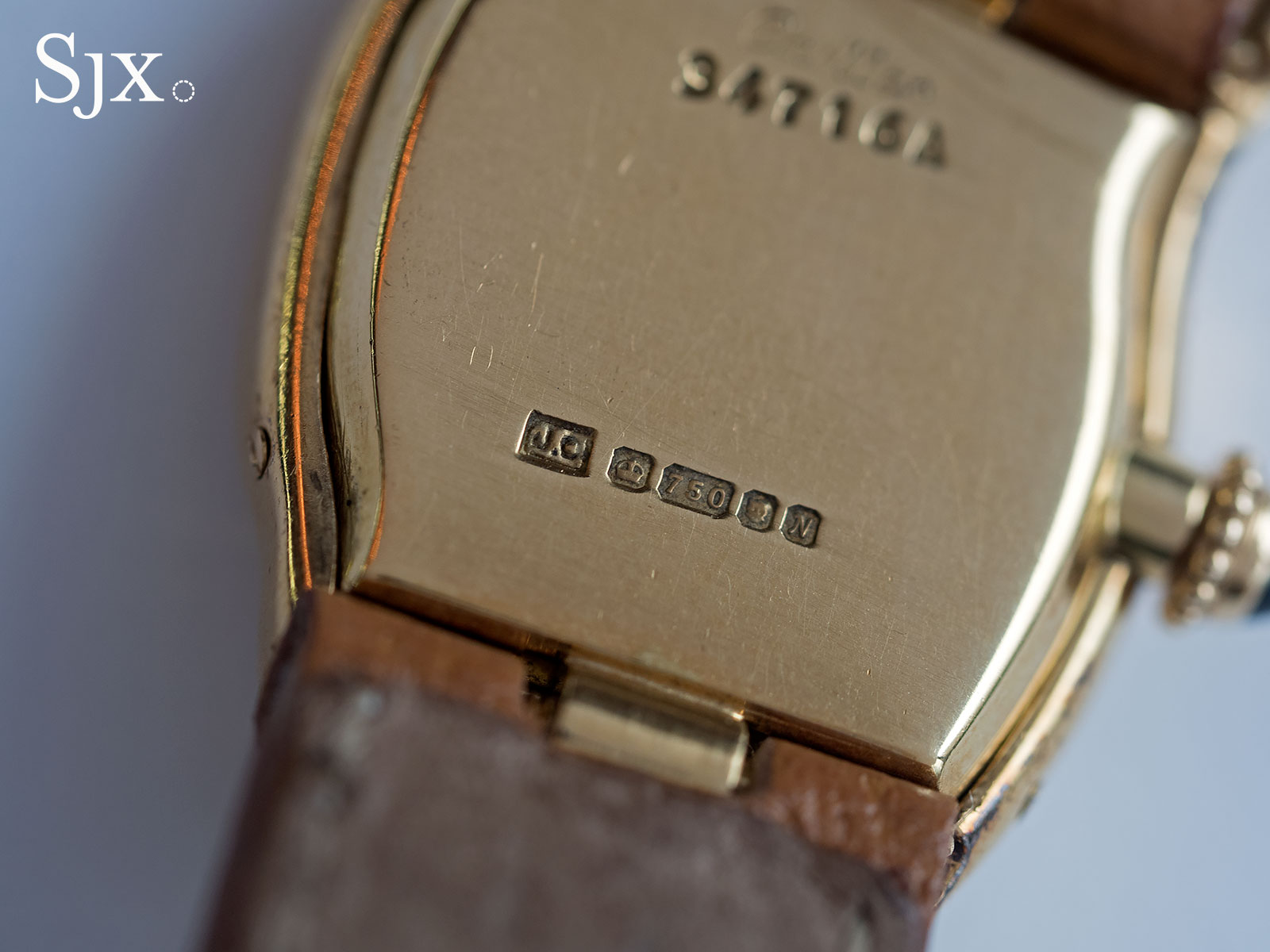
Unlike the modern Crash wristwatch, this example is slightly larger with a more sculpted form, characteristics common to all of the Crash watches made in London.
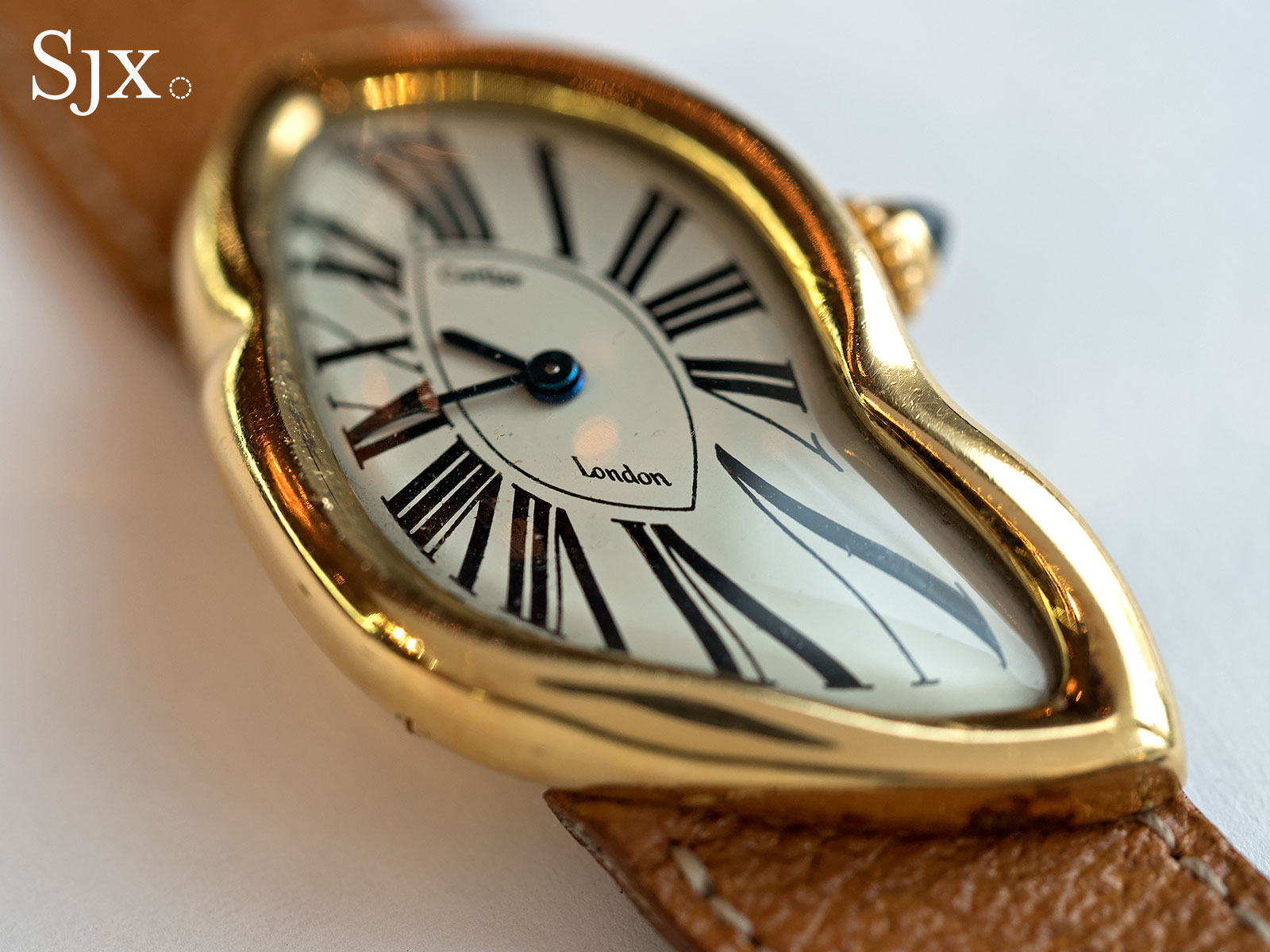
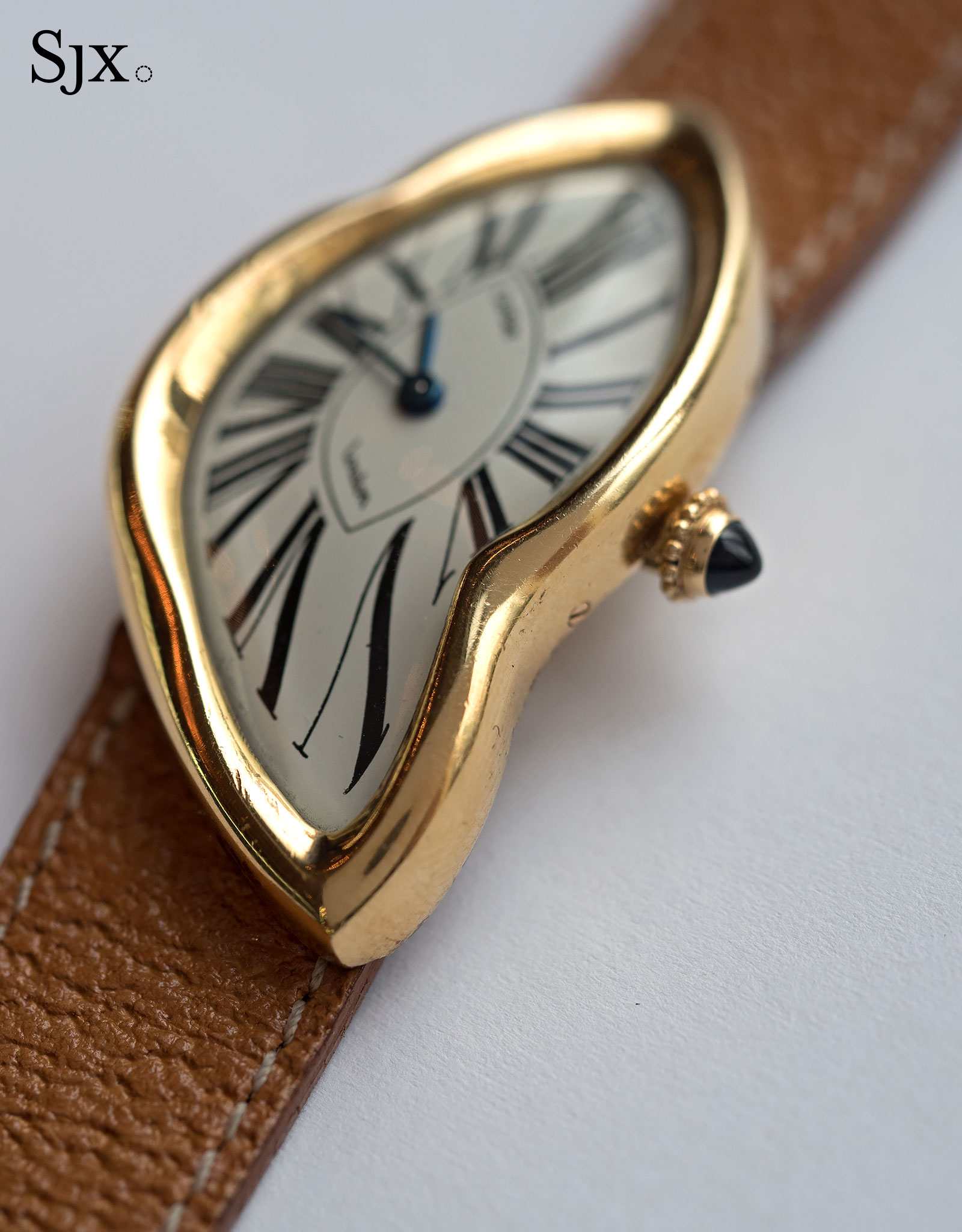
The estimate is US$40,000 to US$80,000.
Lot 18 – Audemars Piguet ref. 5516 perpetual calendar
It might seem hard to believe, but decades passed between the first perpetual calendar wristwatch, and the first one with a leap year indicator, which is now de rigueur for the complication. The leap year indicator made it to the wristwatch courtesy of the Audemars Piguet in 1955, when it unveiled the ref. 5516, a landmark wristwatch for the brand, which has always had a strong historical affinity for the perpetual calendar.
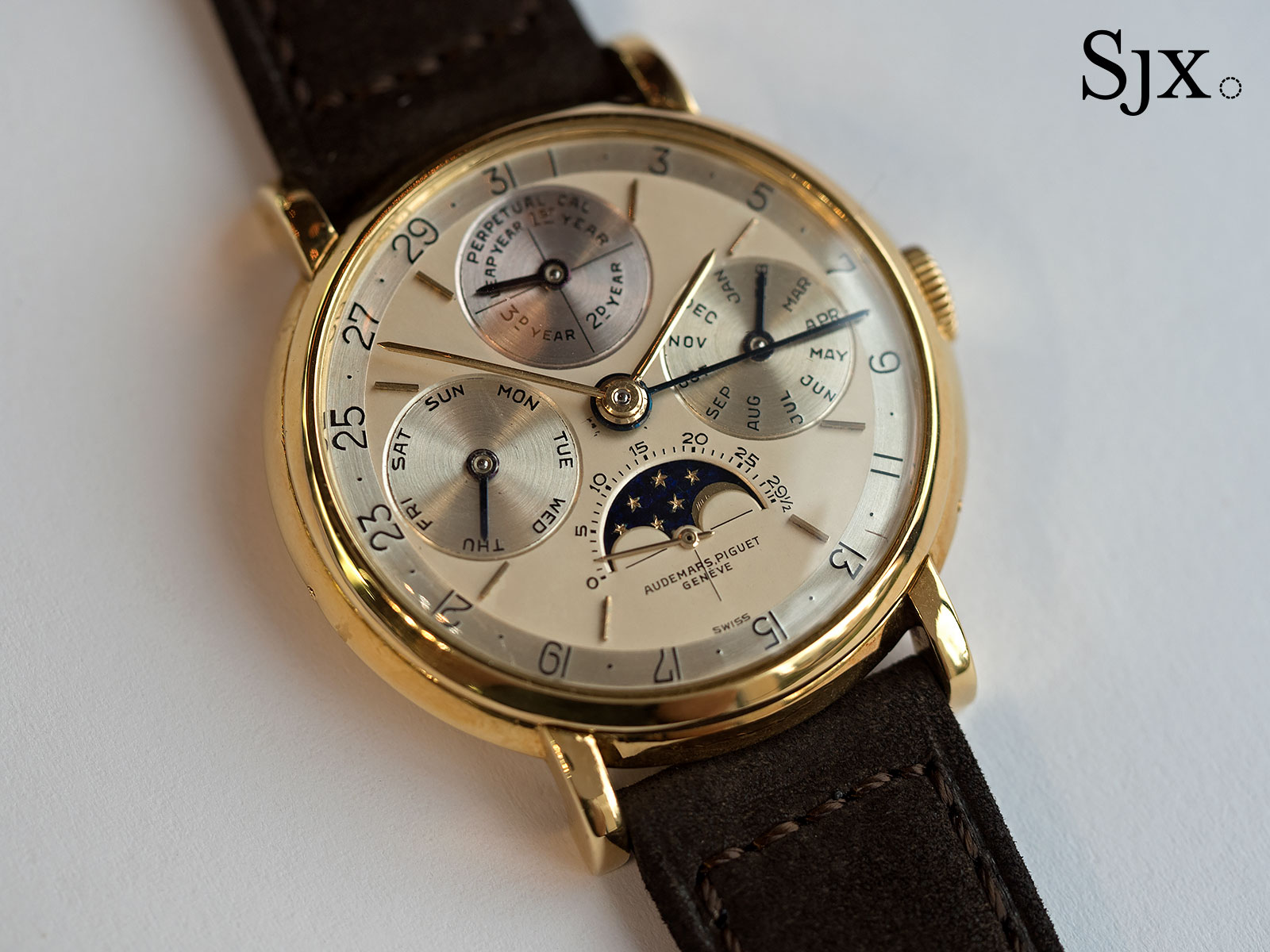
This particularly ref. 5516 is one of nine with the leap year indicator (there were another three without). Not only is it a rare and historically important watch, the ref. 5516 is also good looking. The two-tone dial with lovely raised champleve enamel lettering is functional yet appealing, while the 36.5mm case is relatively large for the era.
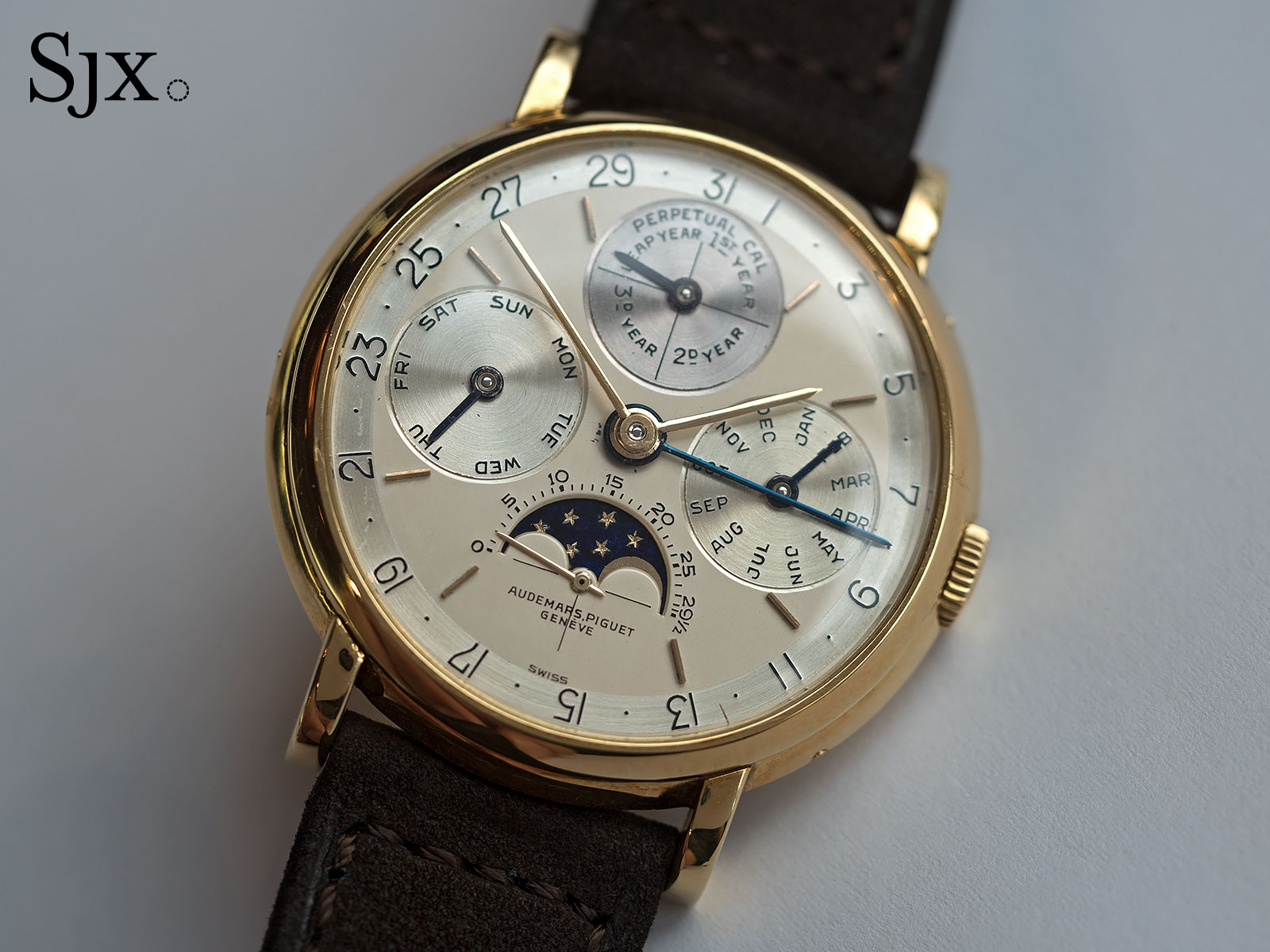
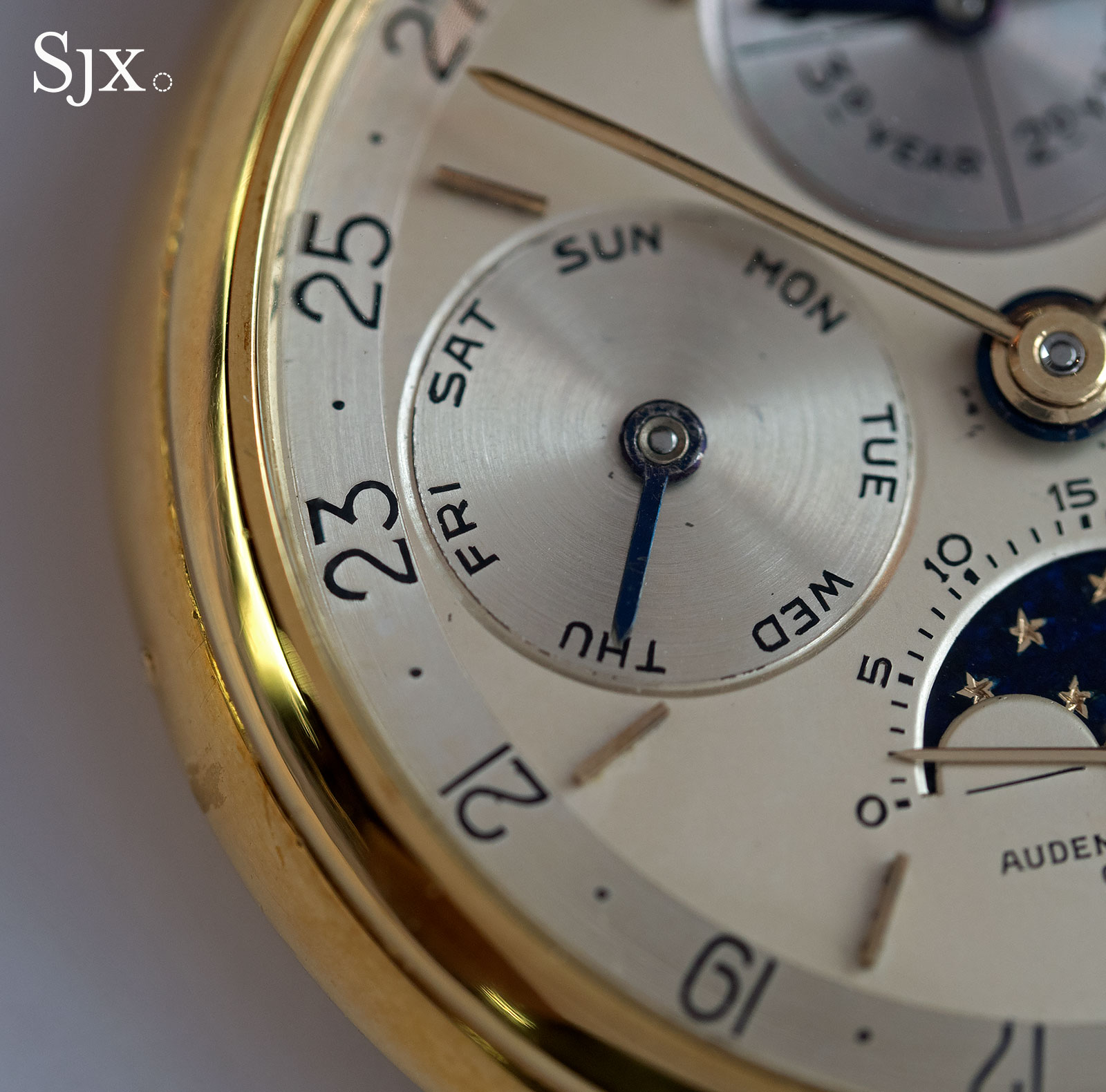
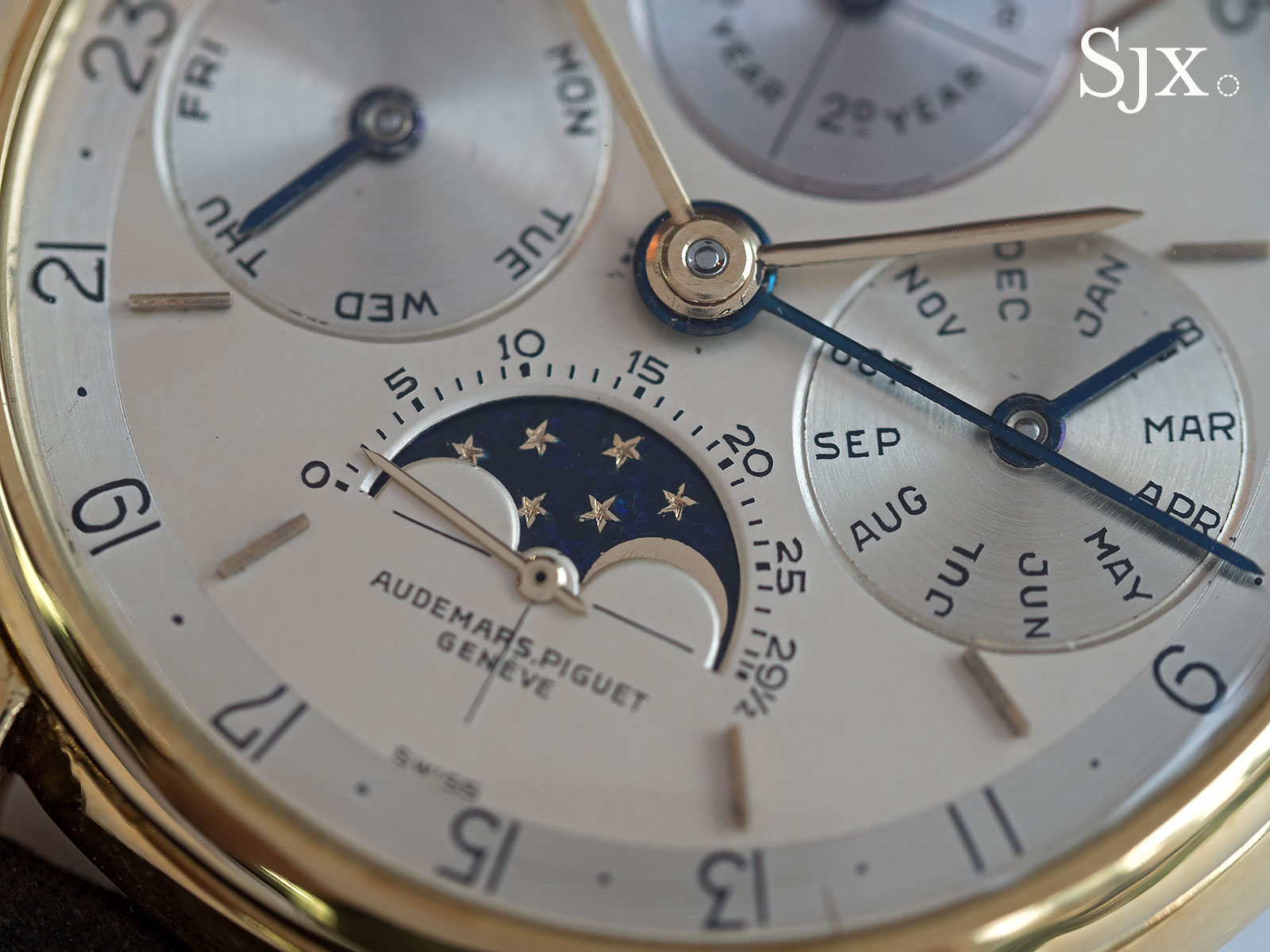
Earlier examples of the ref. 5516 had the leap year sub-dial at six o’clock, while later specimens like this one have it at 12. This example dates to 1957.
All of them, however, were powered by the Valjoux 13VZSSQP, a top of the line base for many high-end movements of the period, including the Valjoux 23 and 72 chronographs.
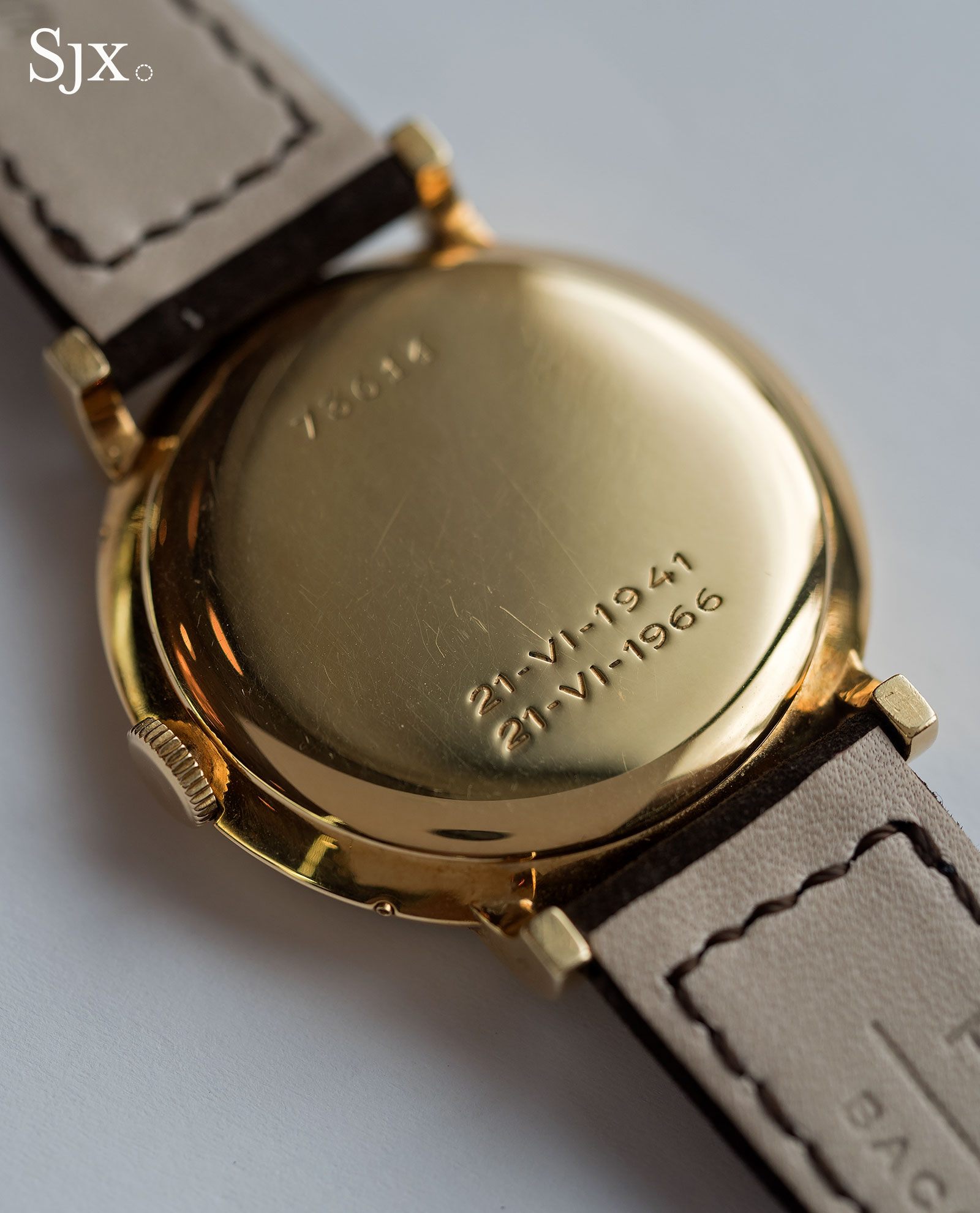
Unusually, this watch is accompanied by two identical dials. The dial shown here is in excellent shape and fitted to the watch, but the number on the dial does not match the case number of “73014”. The dial with the matching number is included in the package as a spare, but it is in less prime condition.
Similar examples have sold in the past in the range of US$300,000 to US$500,000, explaining the US$300,000 to US$600,000 estimate on this one. With the Audemars Piguet Museum already owning four similar ref. 5516s, and Marcus Margulies having sold his collection to Audemars Piguet, it will be worth keeping an eye on who else is willing to go the distance for such a watch.
Lot 21 – Patek Philippe ref. 5029R “Commemoration 1997” minute repeater
Patek Philippe has made numerous minute repeating wristwatch models over the years, but the ref. 5029 remains one of the most graceful. It was a limited edition of 30 pieces – with 10 each in yellow and pink gold, as well as platinum – produced in 1997 to mark the opening of the expansive Patek Philippe factory in Plans-les-Ouates (nicknamed “Plans-les-Watch” for the many watchmakers there).
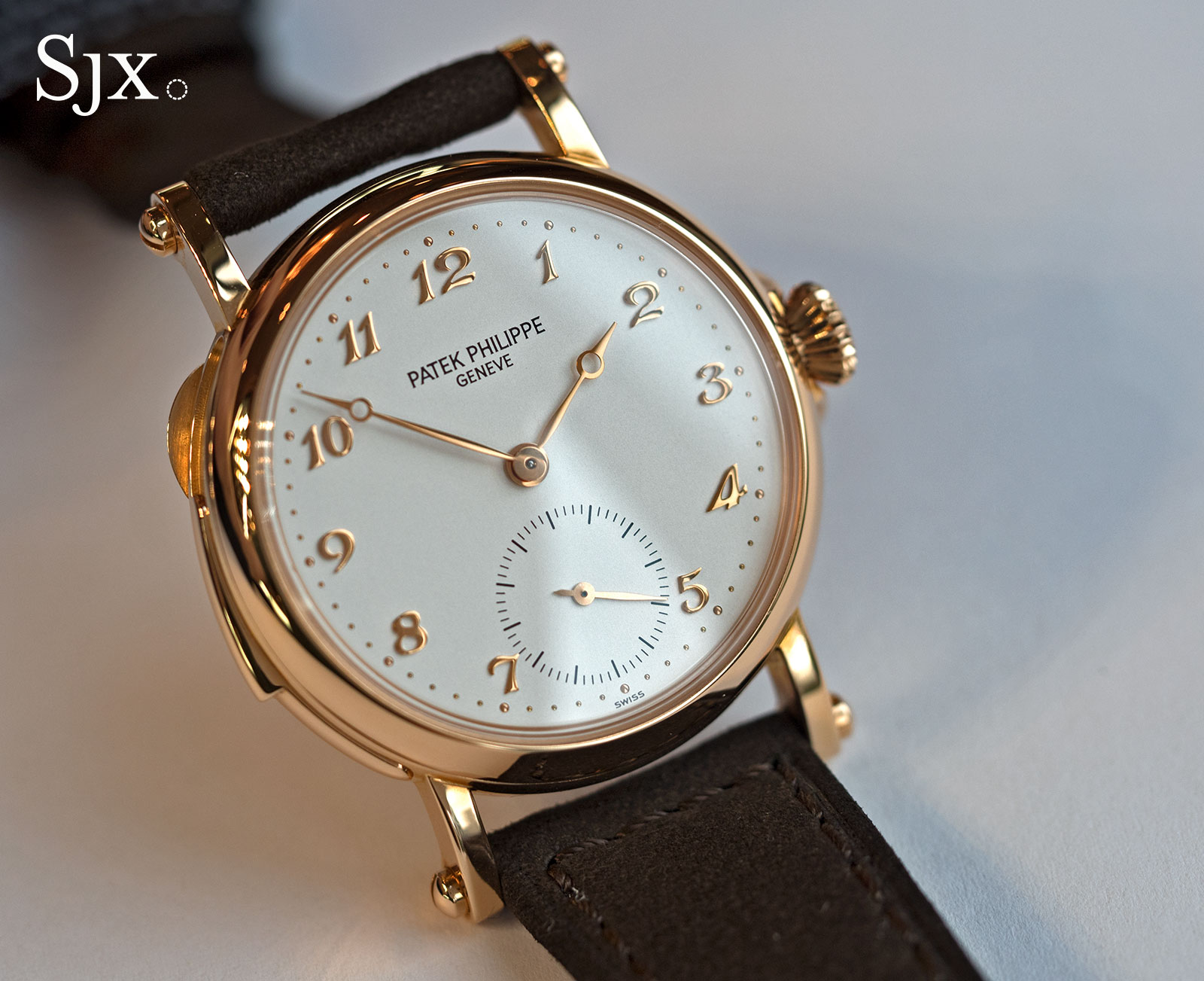
The dial is the classical combination of Breguet numerals and hands, while the case is pink gold and 35mm in diameter.
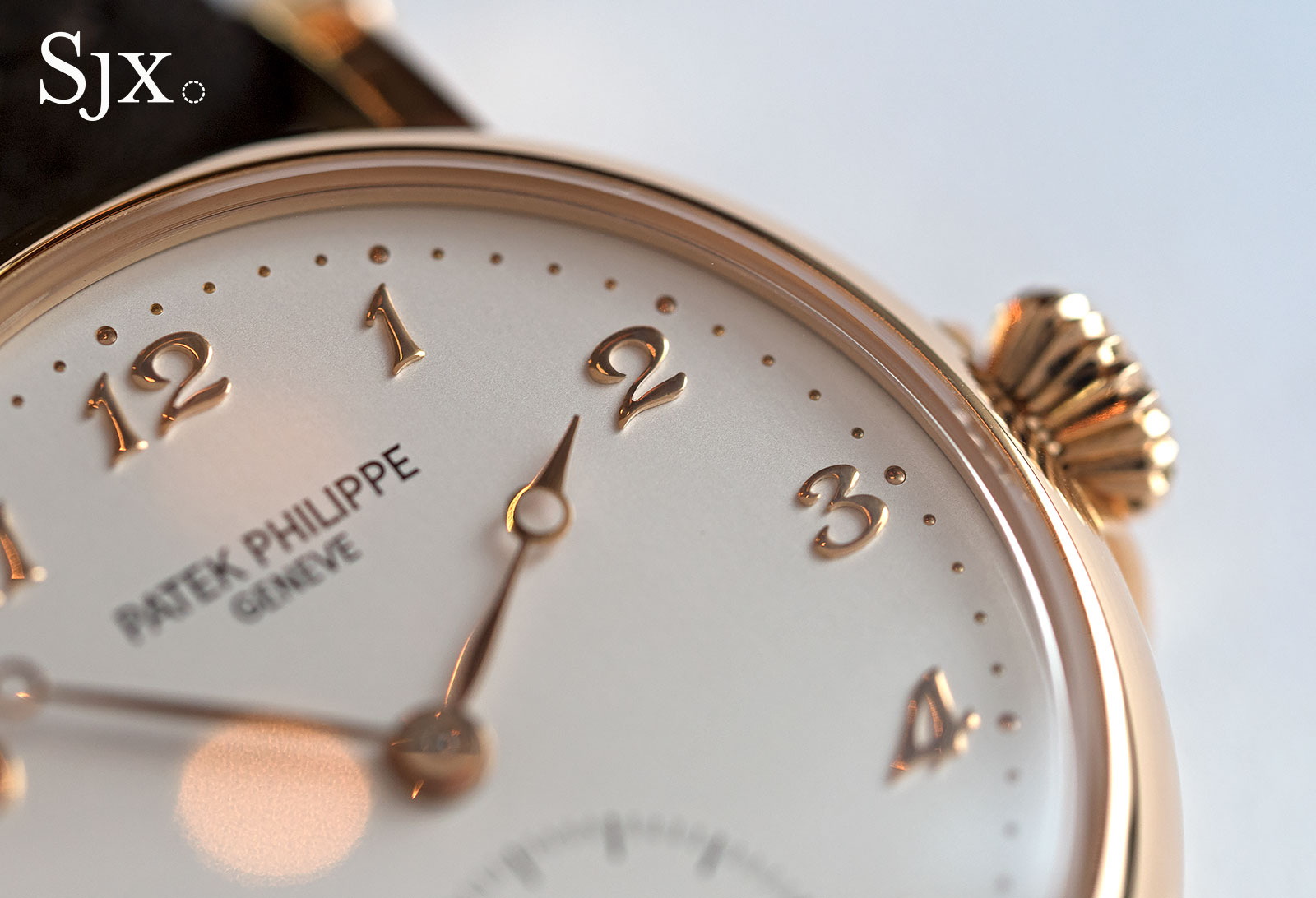
The case is smallish but remarkably elegant, in form and in its details. A small hallmark on the inside of the hinged back reveals why: it was produced by master case maker Jean-Pierre Hagmann.
Hagmann made thousands of watch cases in his career, which ran the gamut from plain to baroque. But his work for Patek Philippe was perhaps his best, and his repeater cases masterworks.
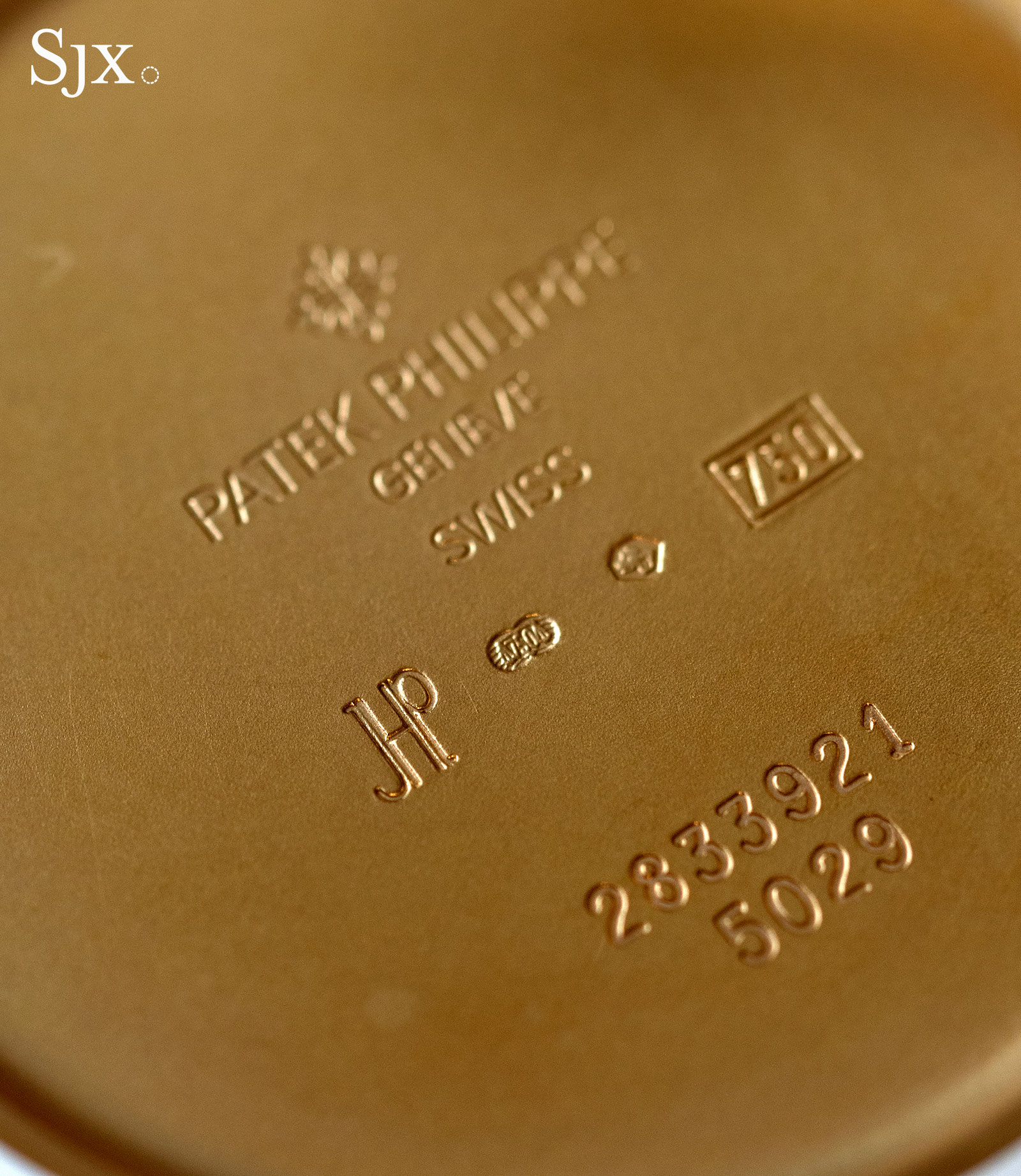
The case of the 5029 exemplifies his skill, being wonderfully fine in construction and shape, while being compact and thin enough to allow the sound out. A particularly handsome detail is the case back hinge that flows into a pair of guards on either side of the crown.
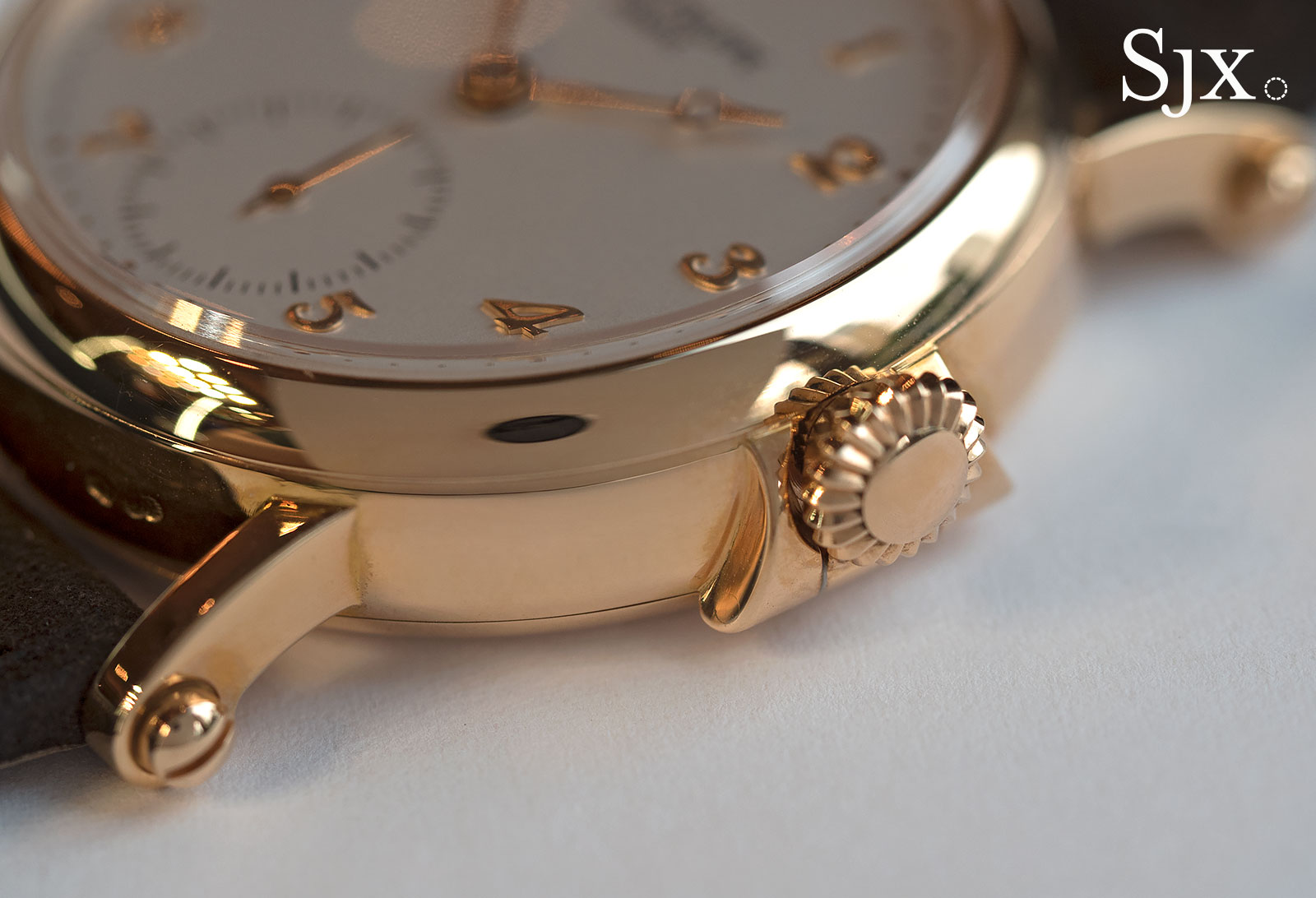
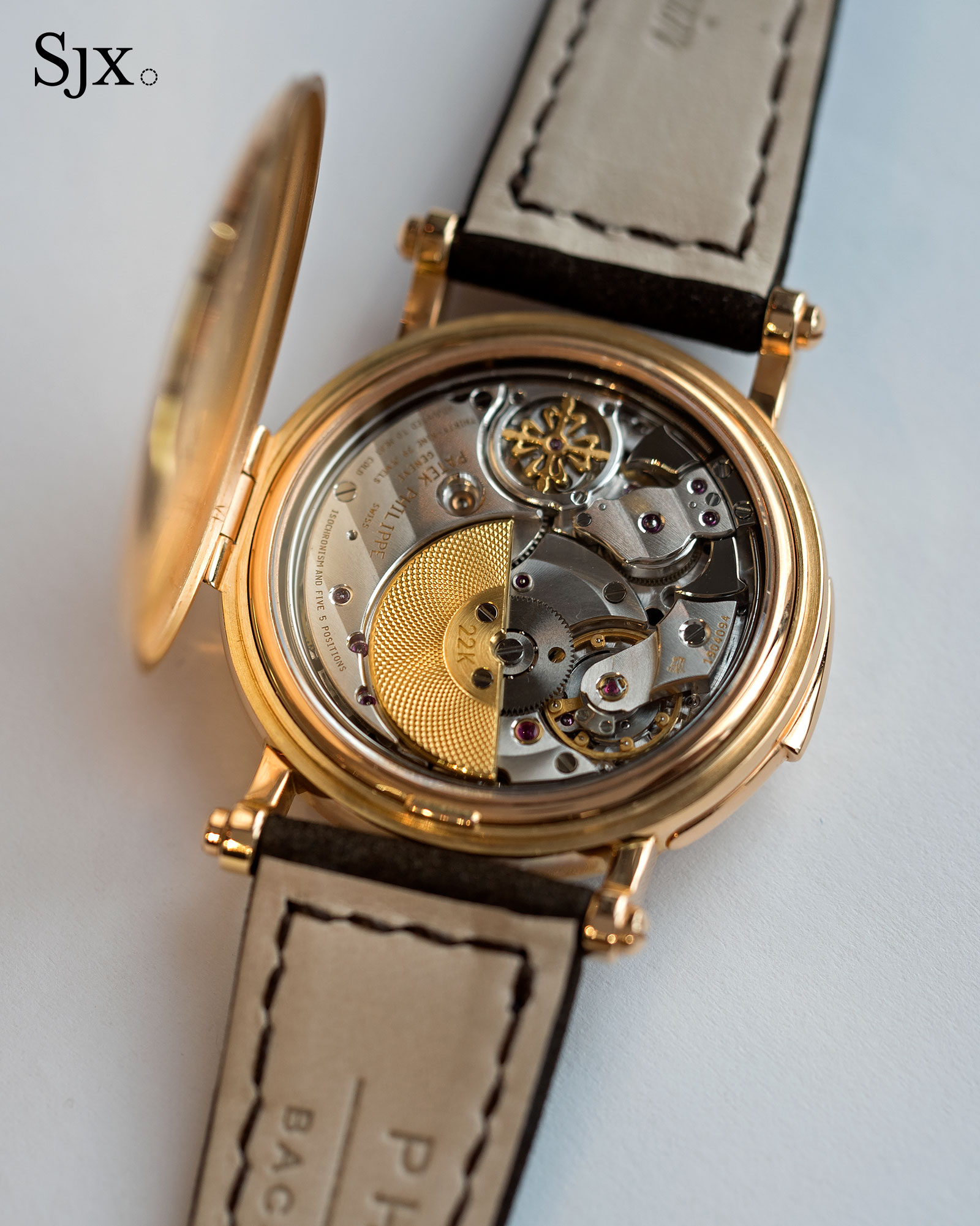
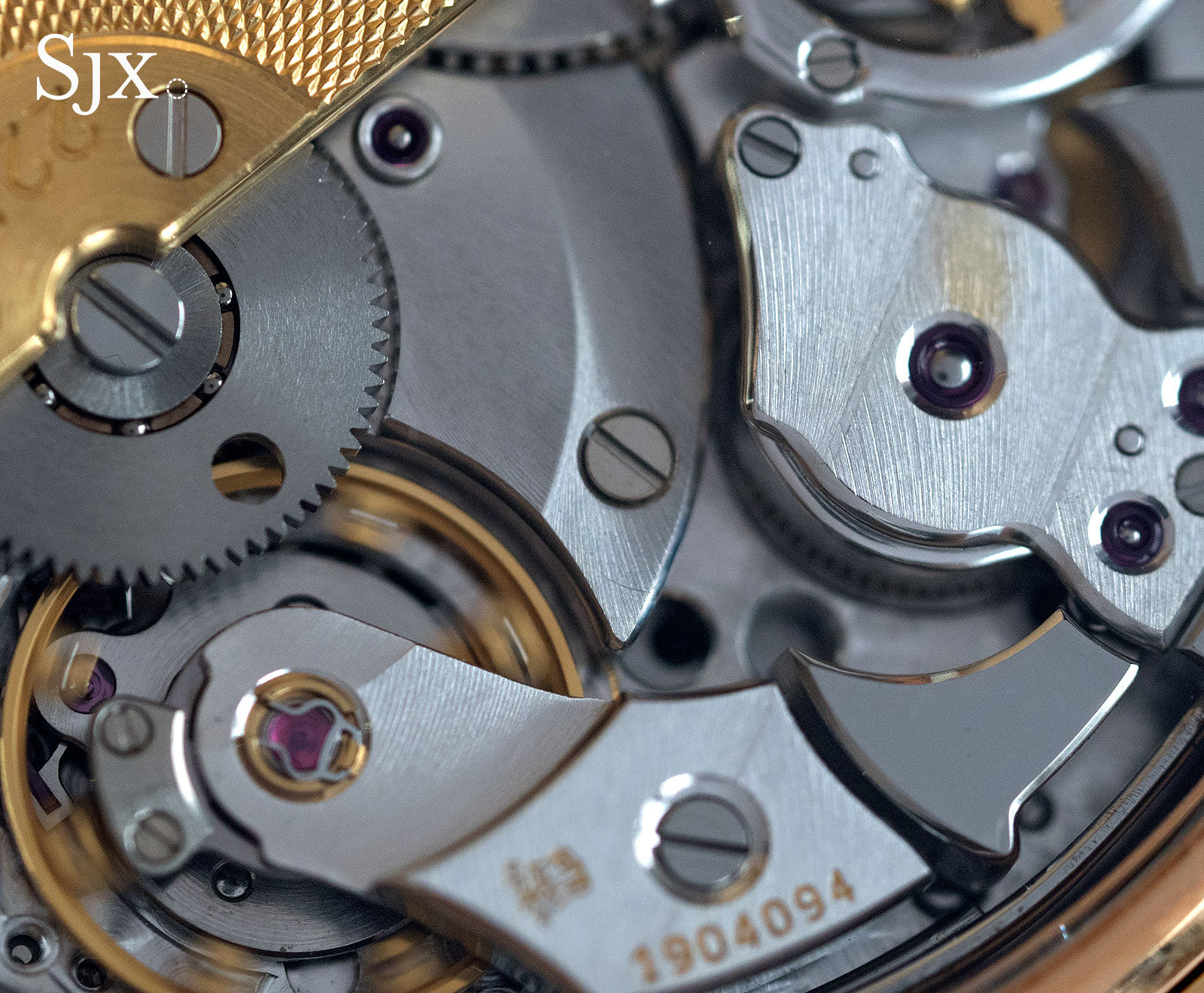
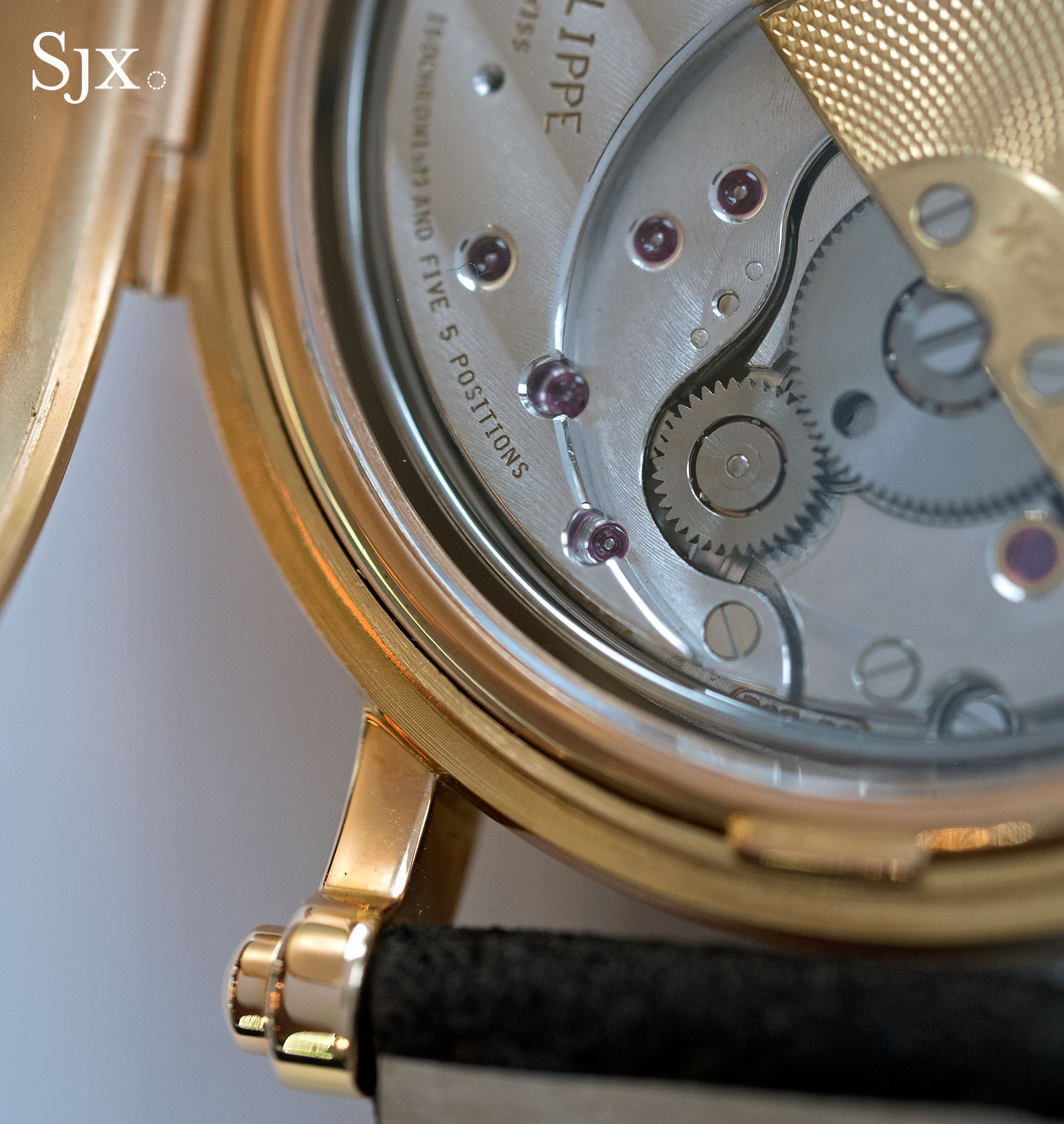
The watch is complete with all original accessories, with an estimate of US$300,000 to US$600,000.
Lot 30 – Cartier Tank Cintrée in platinum
Long and thin, the Tank Cintrée is arguably one of the most graceful rectangular watches ever made (and was just resurrected as a skeleton watch). This 1927 example is notably rare, being in platinum and still attached to the original platinum bracelet.
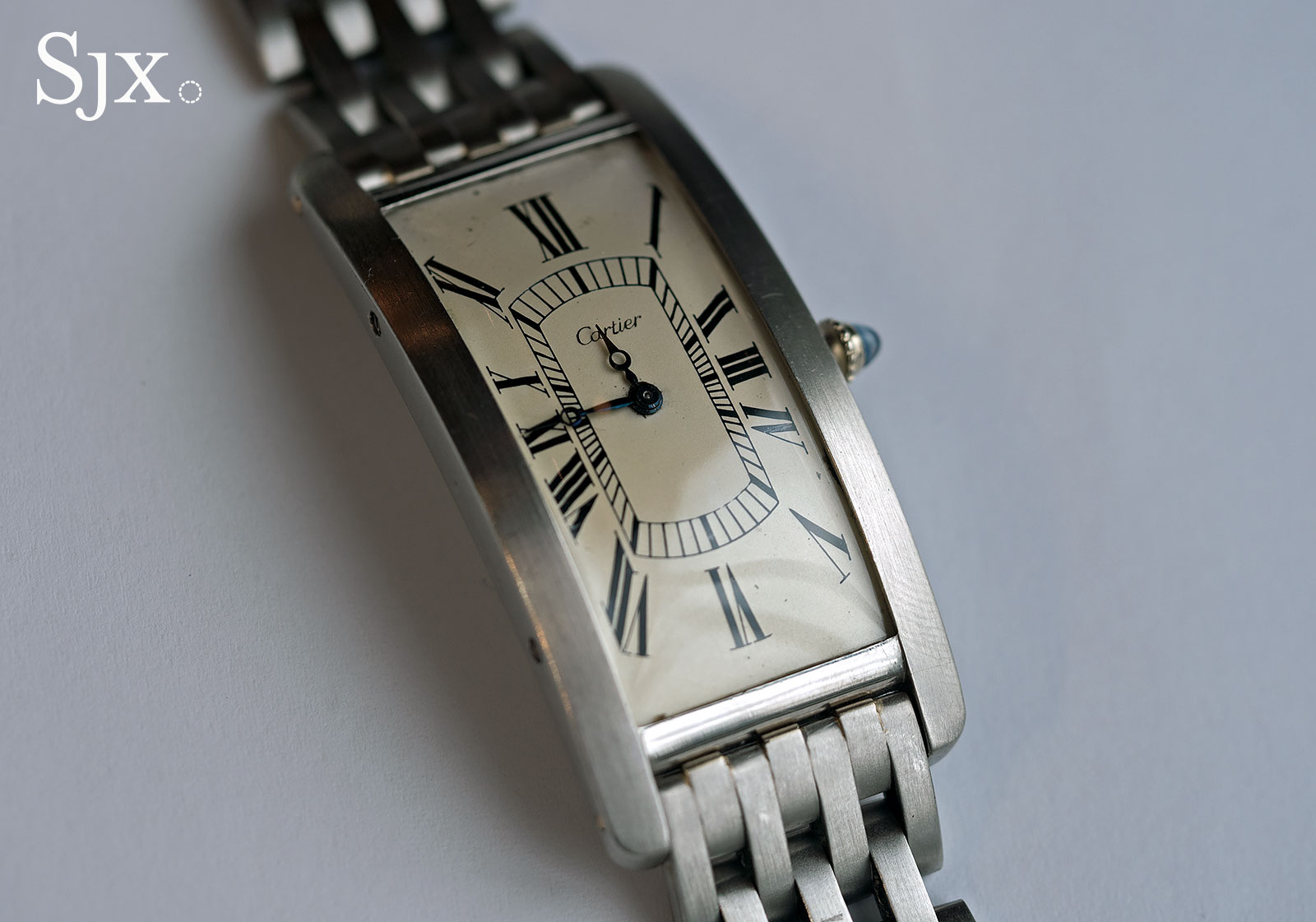
Despite the rarity the watch is typical Cartier with all of the jeweller’s signature design elements, namely Roman numerals, a railway minute track and a blue sapphire cabochon atop the crown.
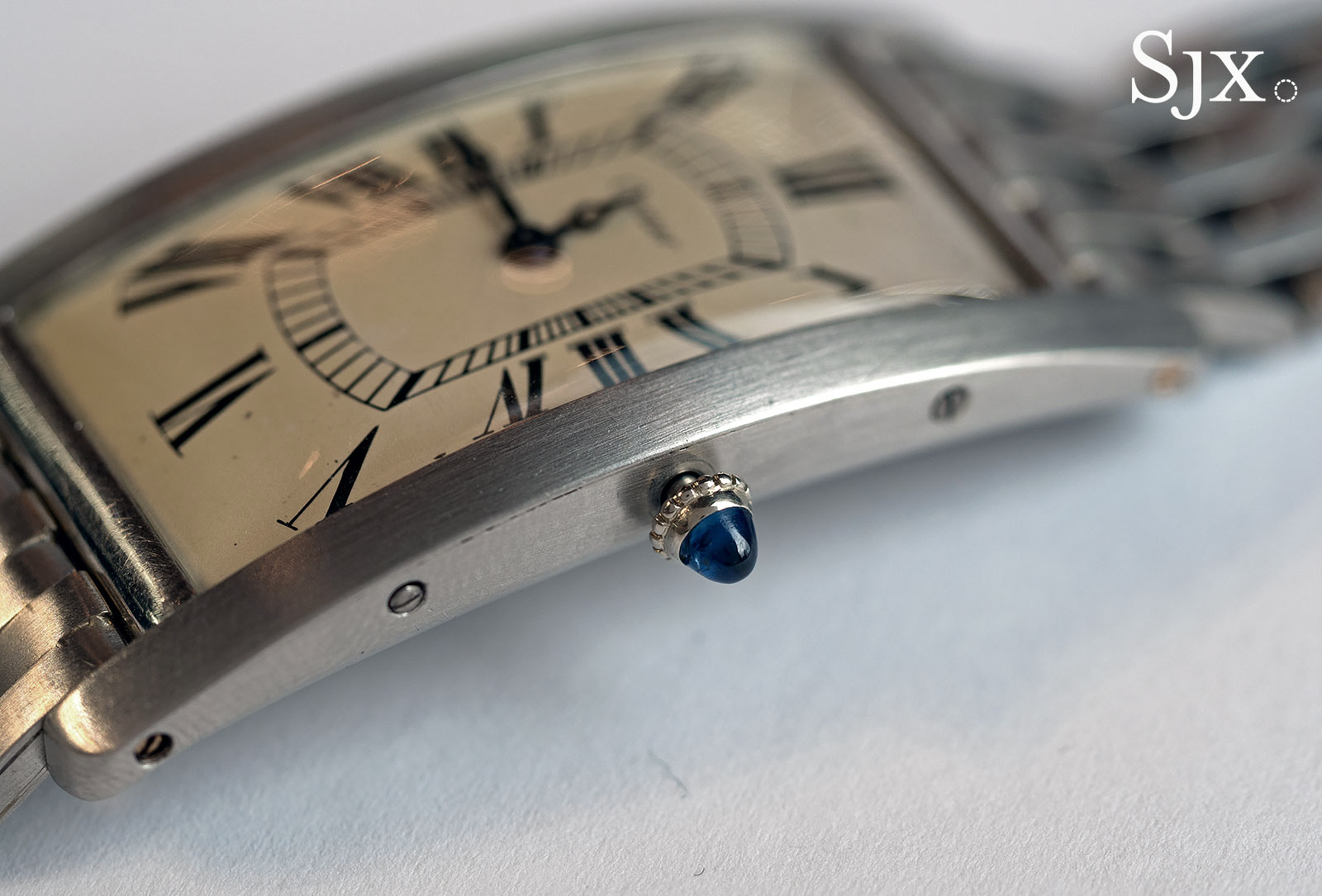
Like all other Cartier wristwatches of the early to mid 20th century, this has inside a calibre from the European Watch & Clock Co., a movement making joint venture between Edmond Jaeger and Cartier that relied on ebauches, or movement blanks, from LeCoultre.
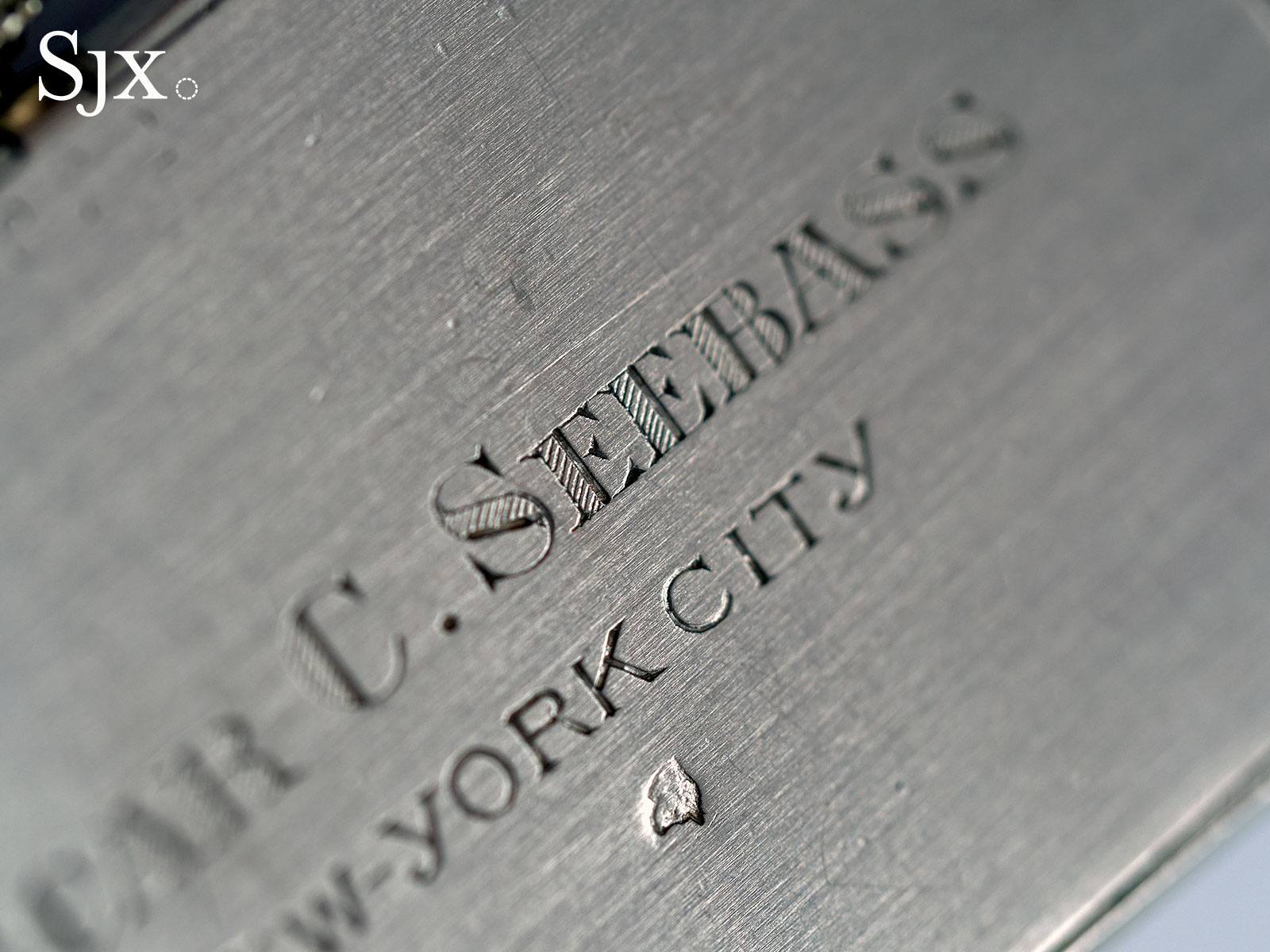
Measuring 23mm in diameter and 46mm long, this Tank Cintrée wears like a modern watch. Add to that the weight of the bracelet and it feels distinctly unlike any other watch of its era.
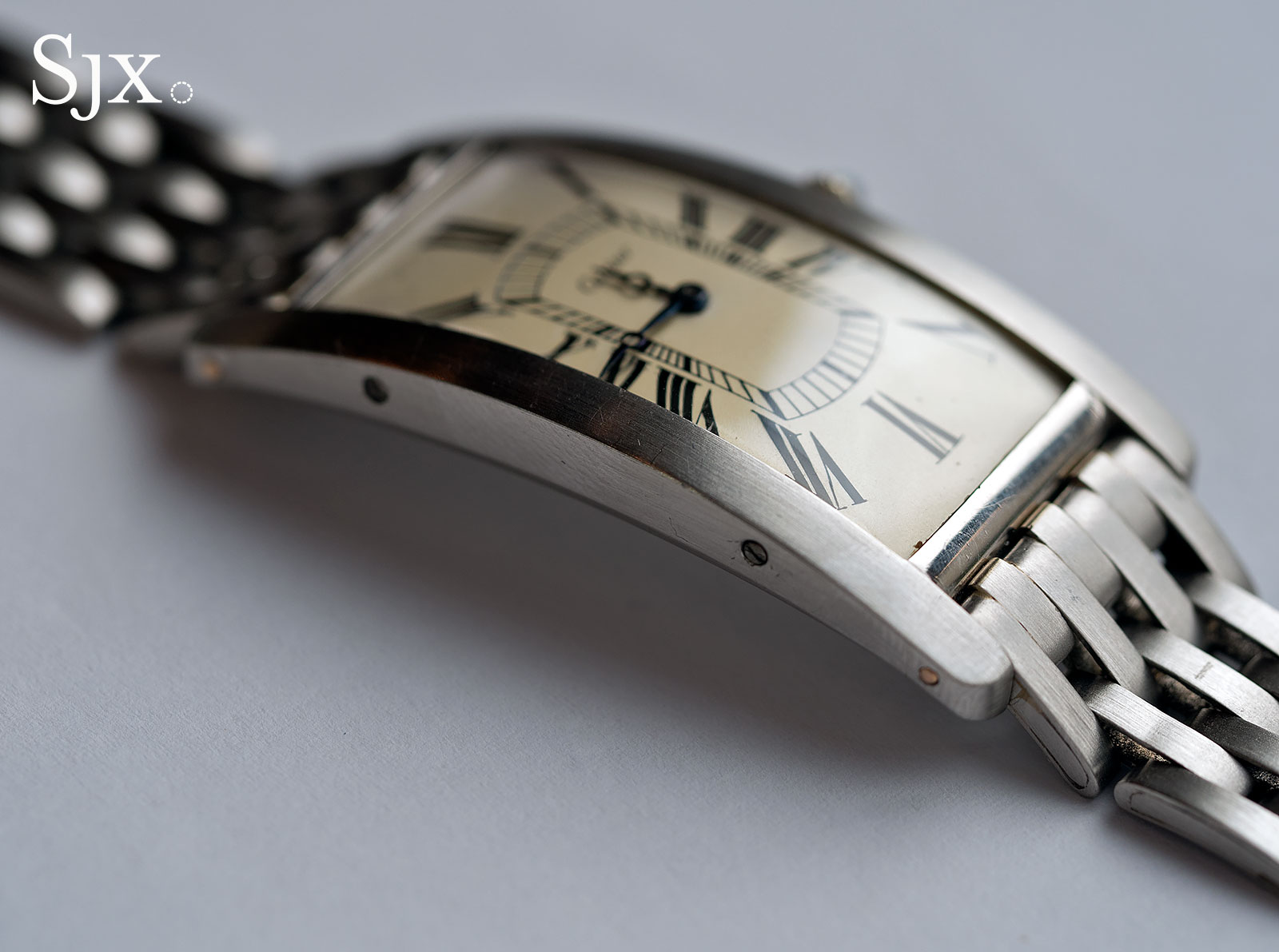
The estimate is US$250,000 to US$500,000.
Lot 37 – Vacheron Constantin ref. 4764 “Cioccolatone”
Also dramatically large like the Cartier above, the Vacheron Constantin ref. 4764 triple calendar has long had the nickname cioccolatone after the chocolate square of the same shape.
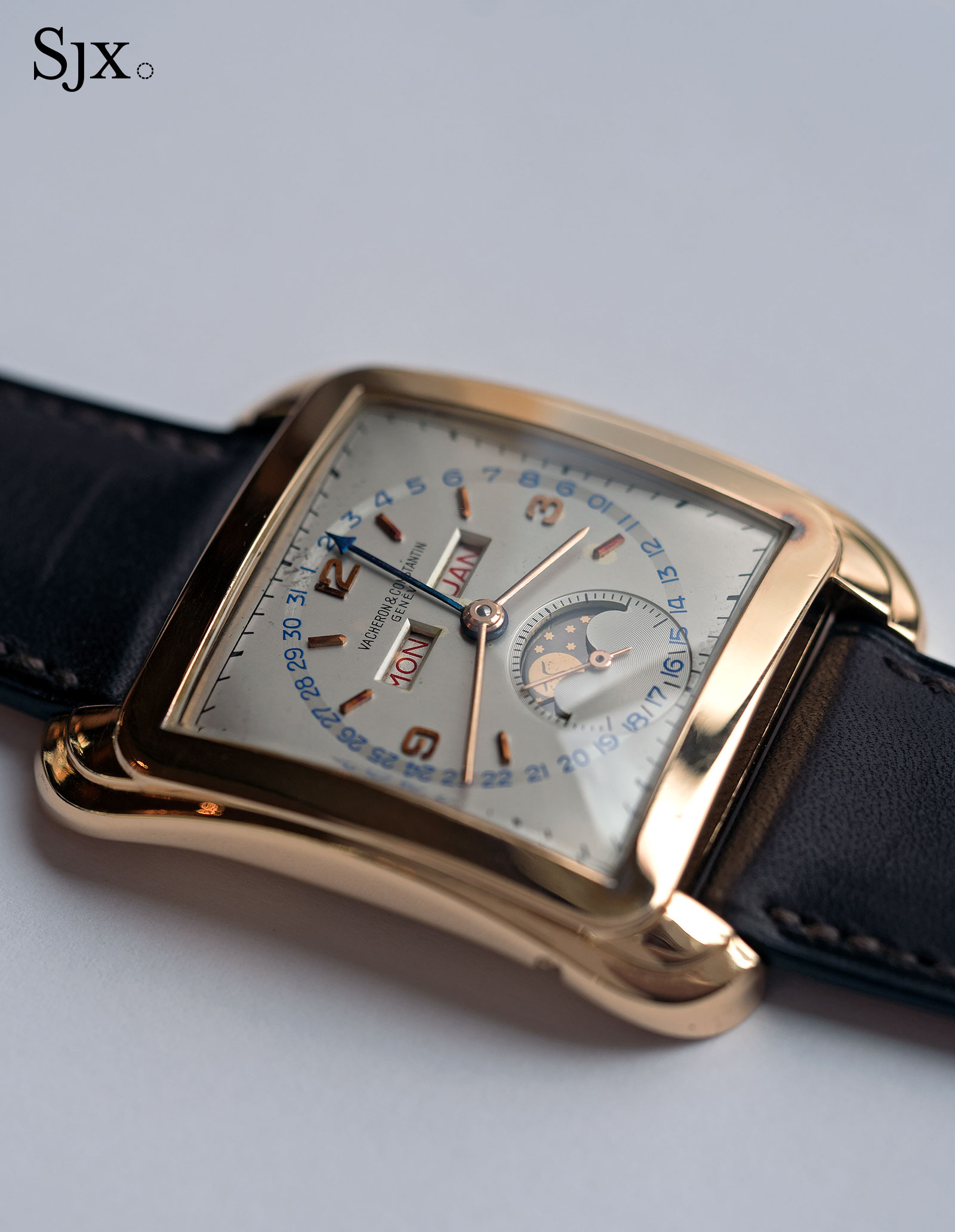
It was not the only model so named, since the Geneva watchmaker produced several references with an identically shaped case, though the triple calendar model is the most compelling, and also the most valuable.
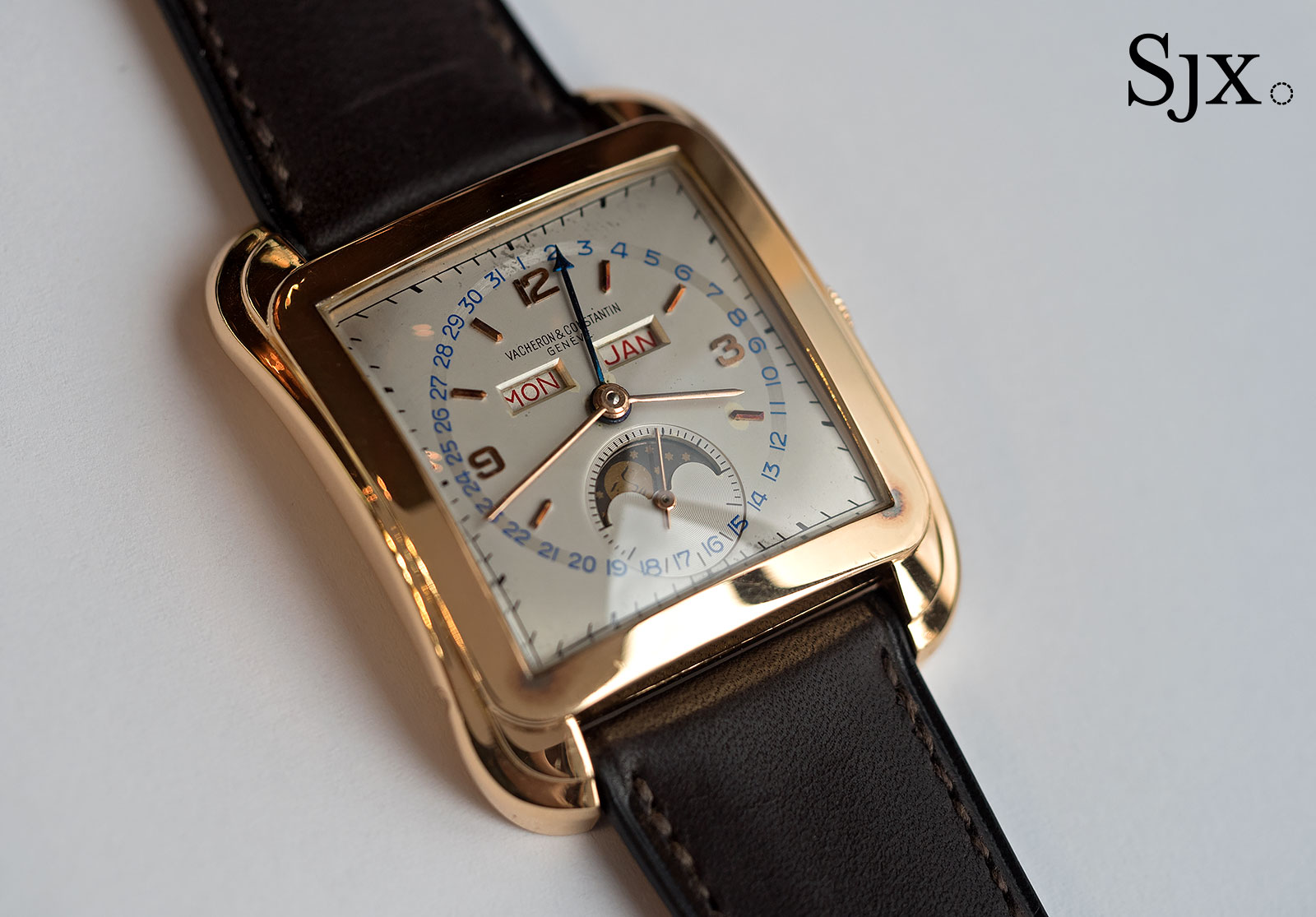
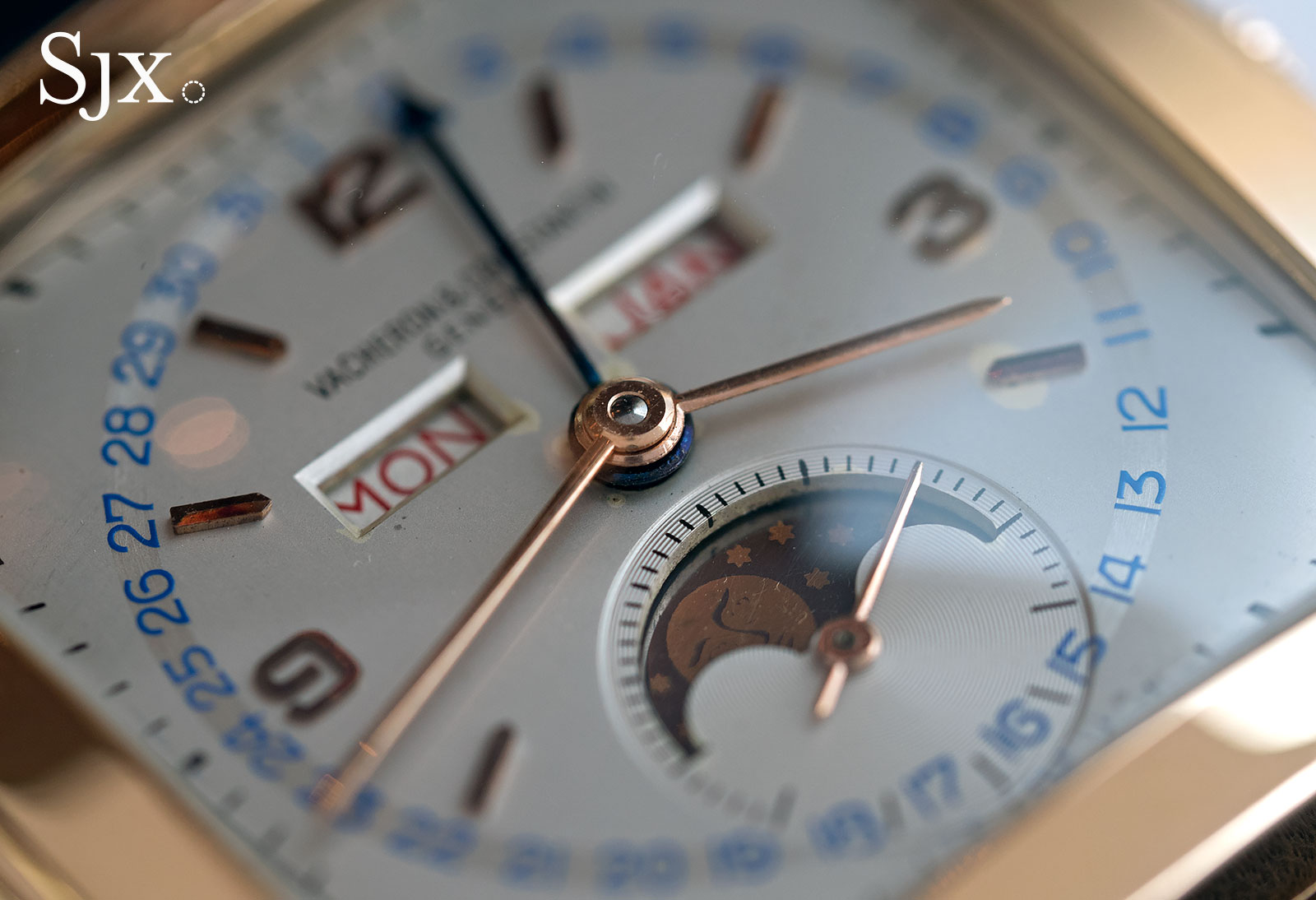
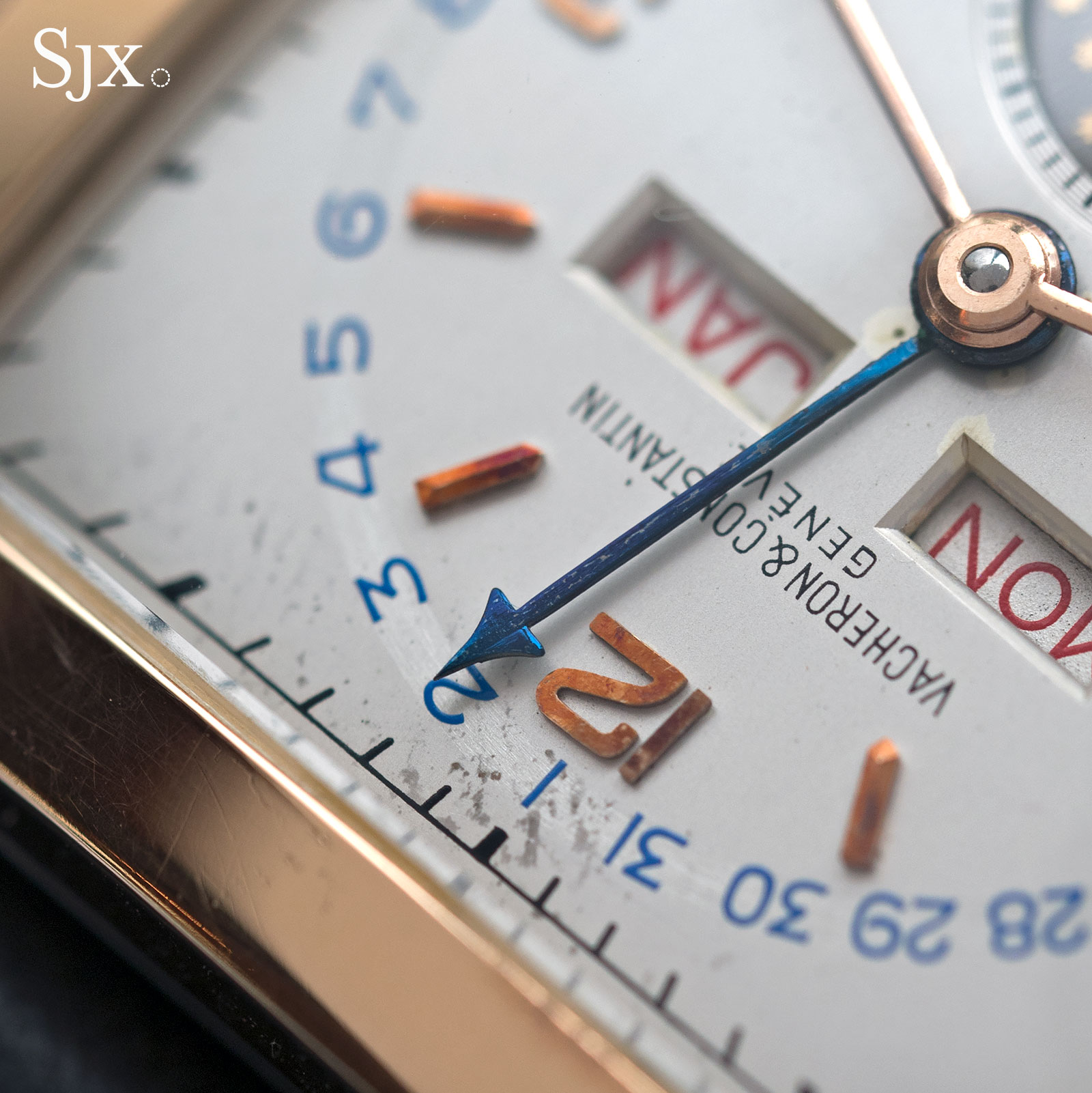
The case is 36mm wide and 43mm long, dimensions that make it seem squat from the front, though it sits elegantly thanks to the flowing, stepped lugs. The watch looks good on the wrist.
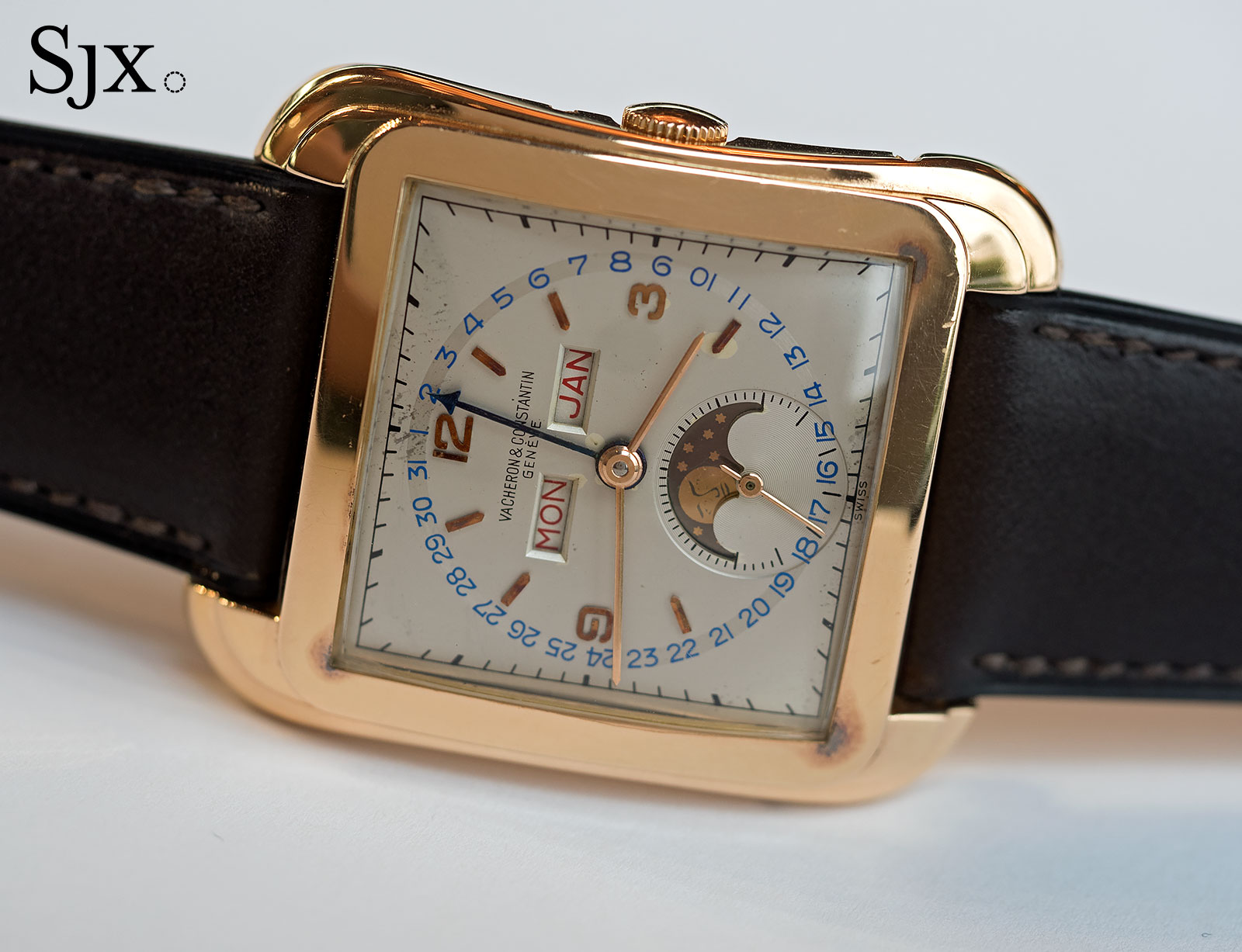
This example is pink gold, of which only a few are known as most ref. 4764s were in yellow gold (plus two in white). It’s estimated at US$200,000 to US$400,000.
Lot 44 – Longines ref. 6630 Swissair
A striking example of functional watchmaking, the Longines ref. 6630 is an oversized pilot’s watch, one of less than a hundred examples produced for Swissair in the 1950s.
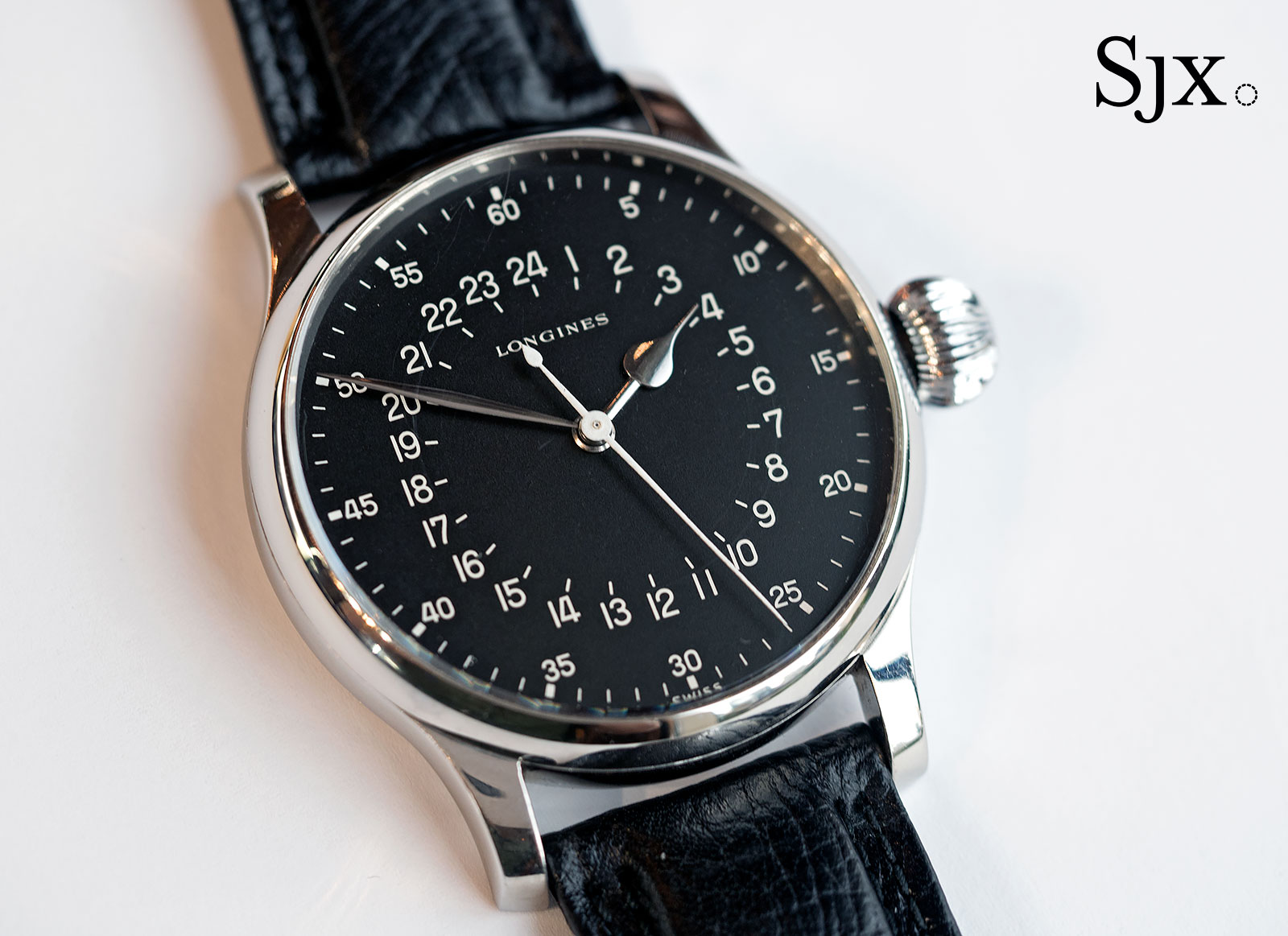
Engraved with the airline’s name as well as serial number on the back, the watches were apparently given to pilots and employees of the Swiss national carrier, regarded as the best airline in the world in the latter half of the 20th century (until it went bust in 2002).
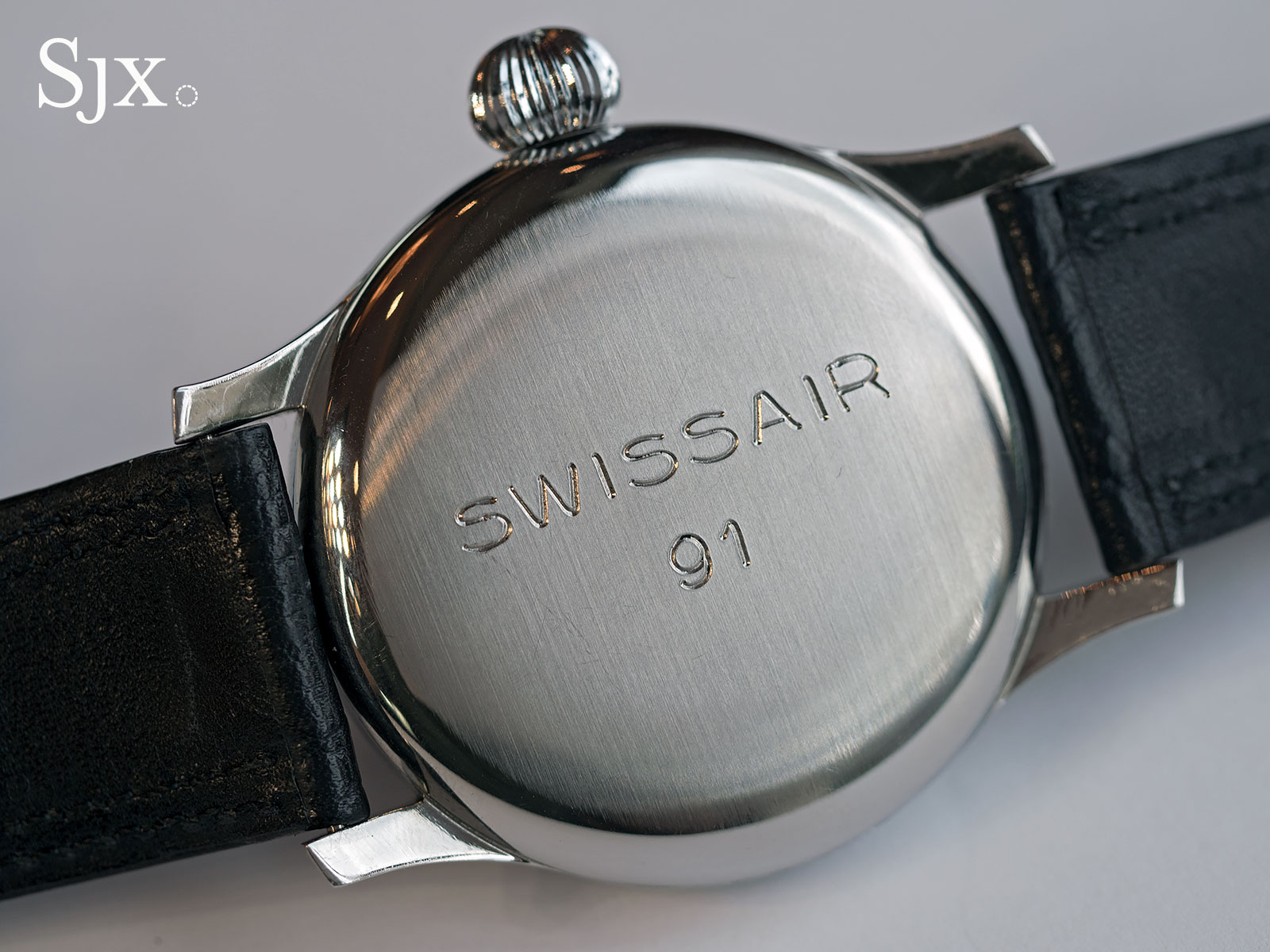
The steel case is 47mm in diameter with a large onion-shaped crown, not unlike Longines’ most famous aviator’s watch, the Hour Angle designed by Charles Lindbergh (might these have used leftover Lindbergh cases?).
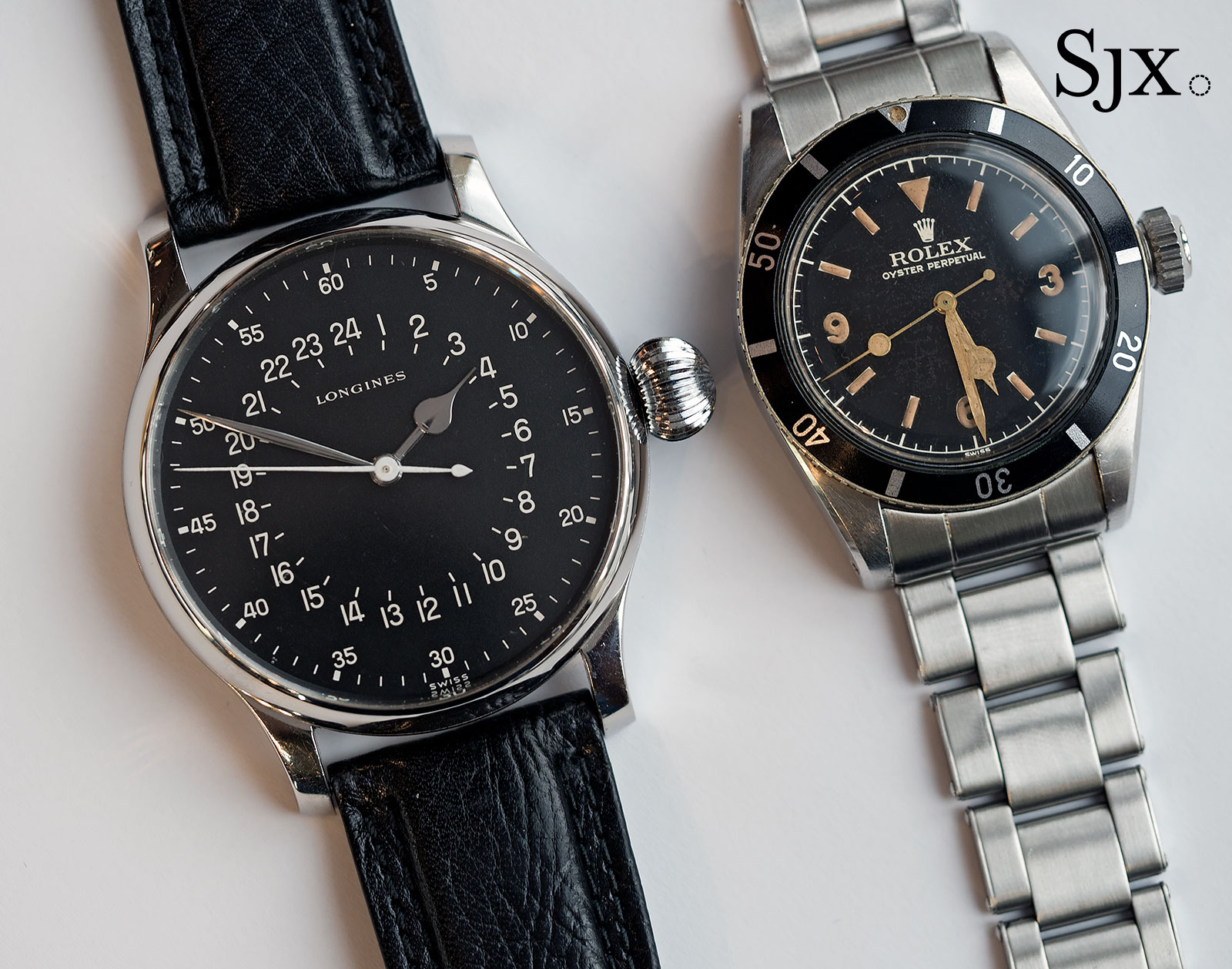
And the dial is strictly no-nonsense with an outer minute track and inner 24-hour scale.
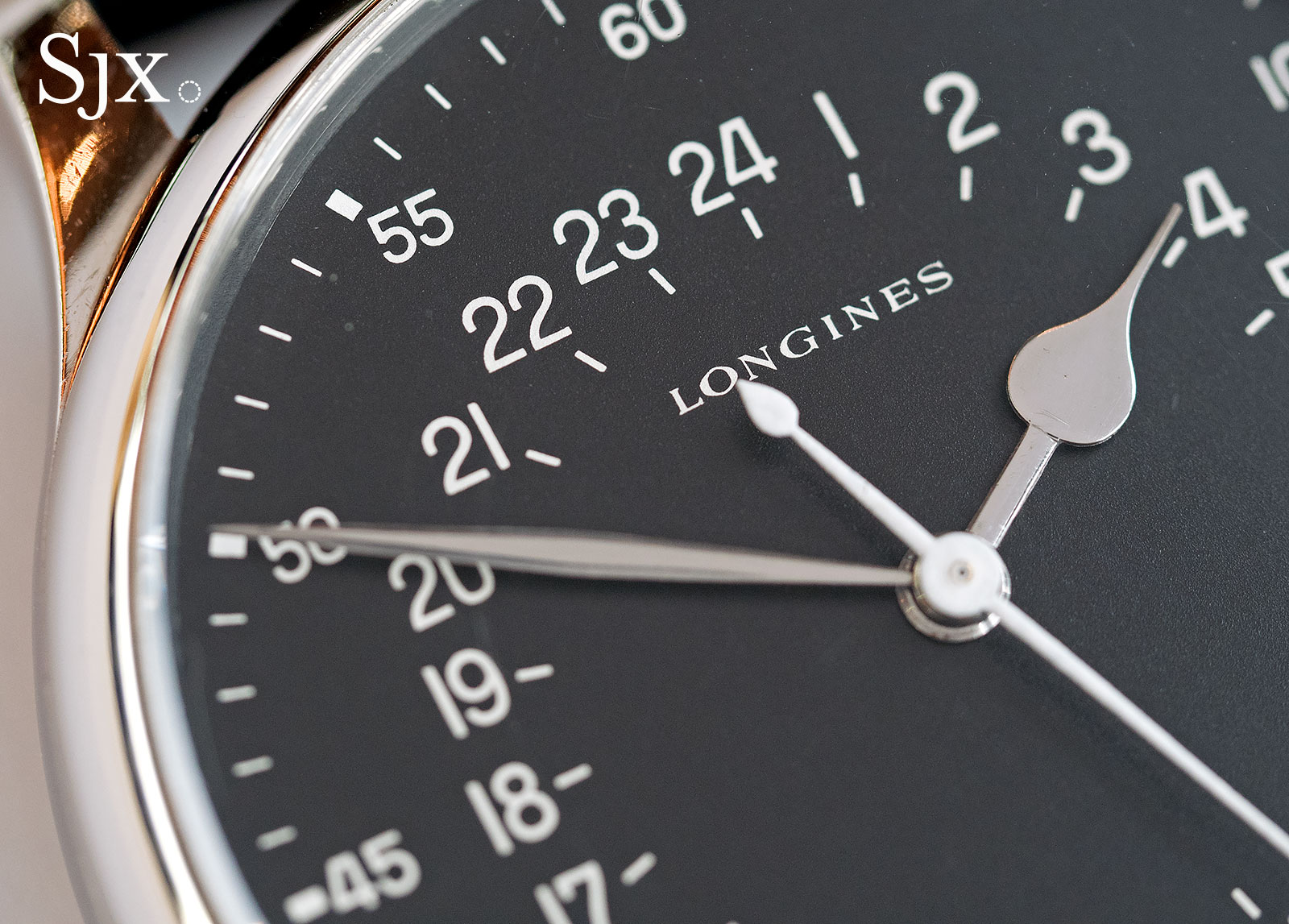
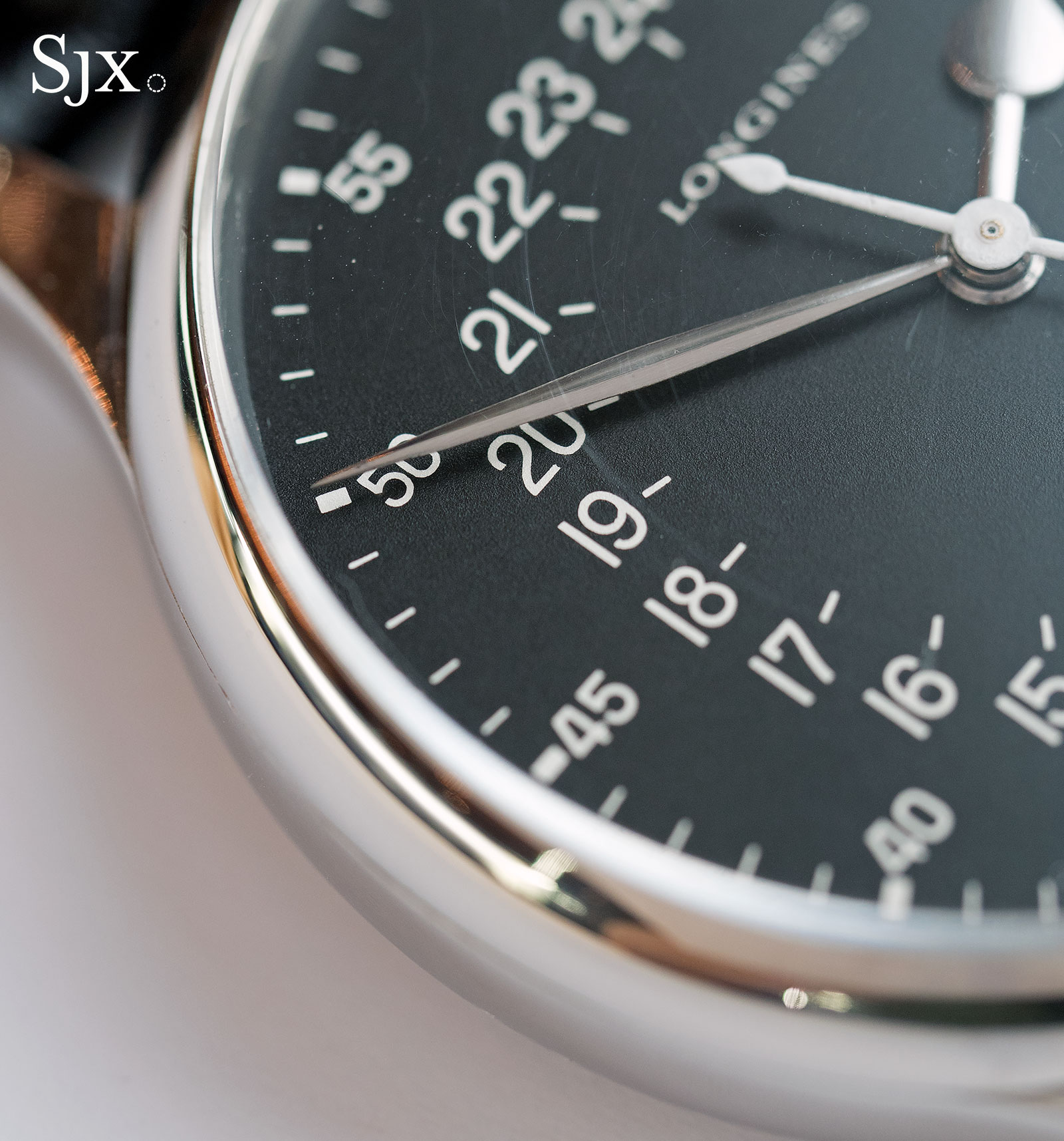
According to Phillips, this is only the third example of a ref. 6630 sold at auction. The estimate is US$60,000 to US$120,000.
Lot 47 – Philippe Dufour Duality
There are only a handful of modern watches in the New York auction, and the Philippe Dufour Duality is unquestionably the most significant (in fact, we broke the news on its sale a month ago).
The Duality is an intriguing watch from one of the most important independent watchmakers, being an unusual complication and also a short-lived model of which only ten were made.
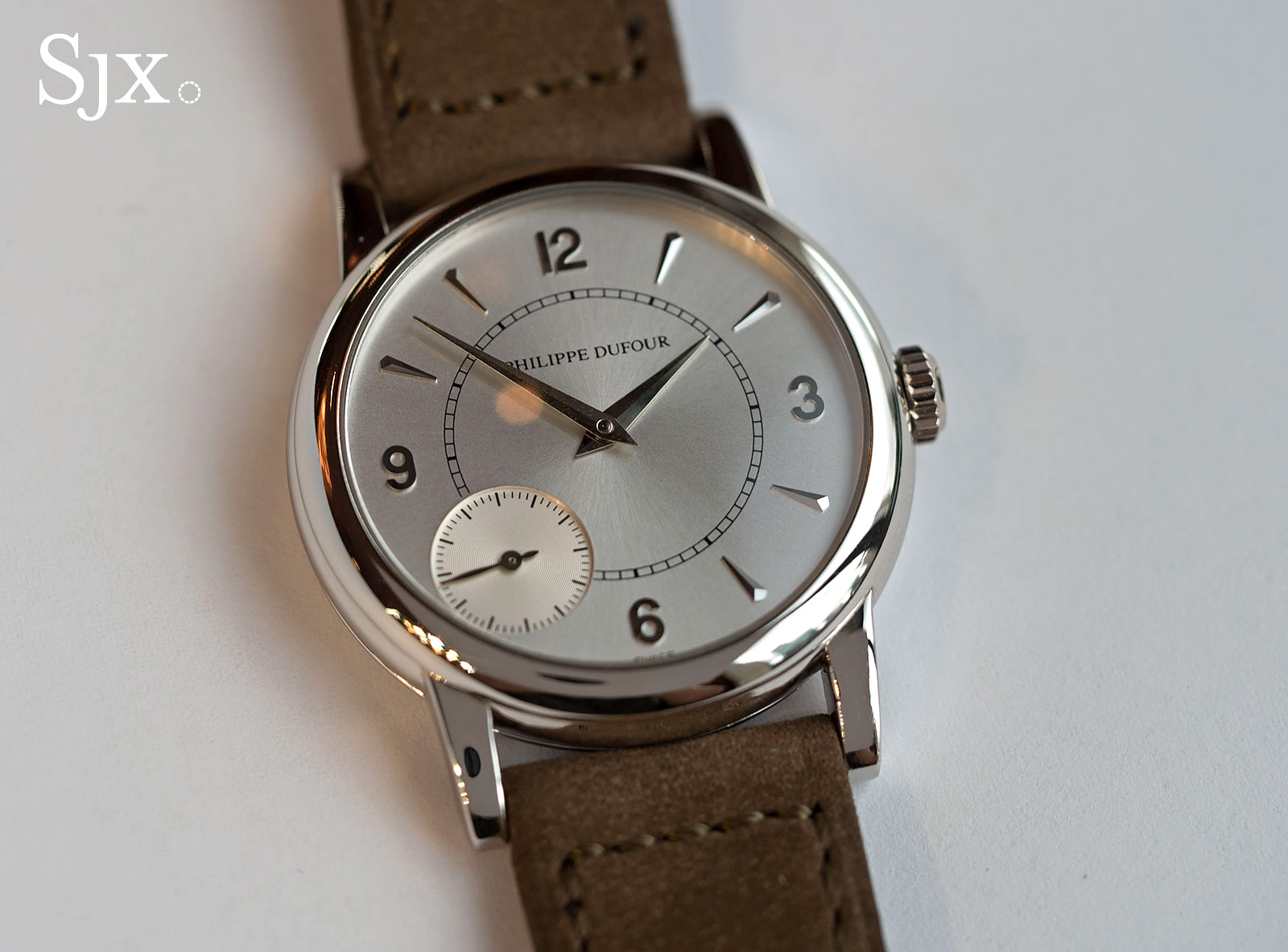
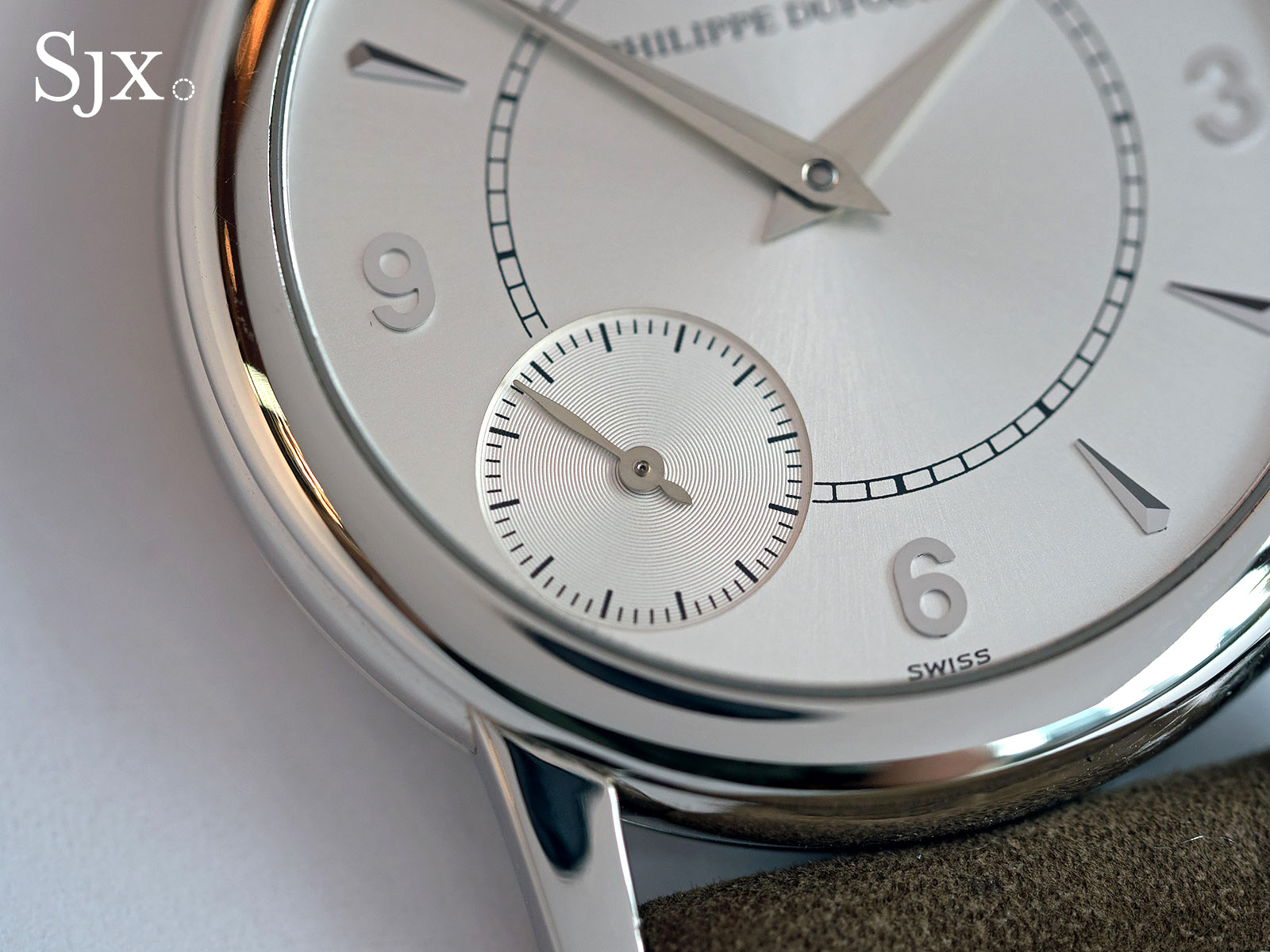
Unlike Dufour’s famous Simplicity that’s enormously easy to comprehend (essentially really, really great finishing), the Duality is more intellectual, and consequently more significant.
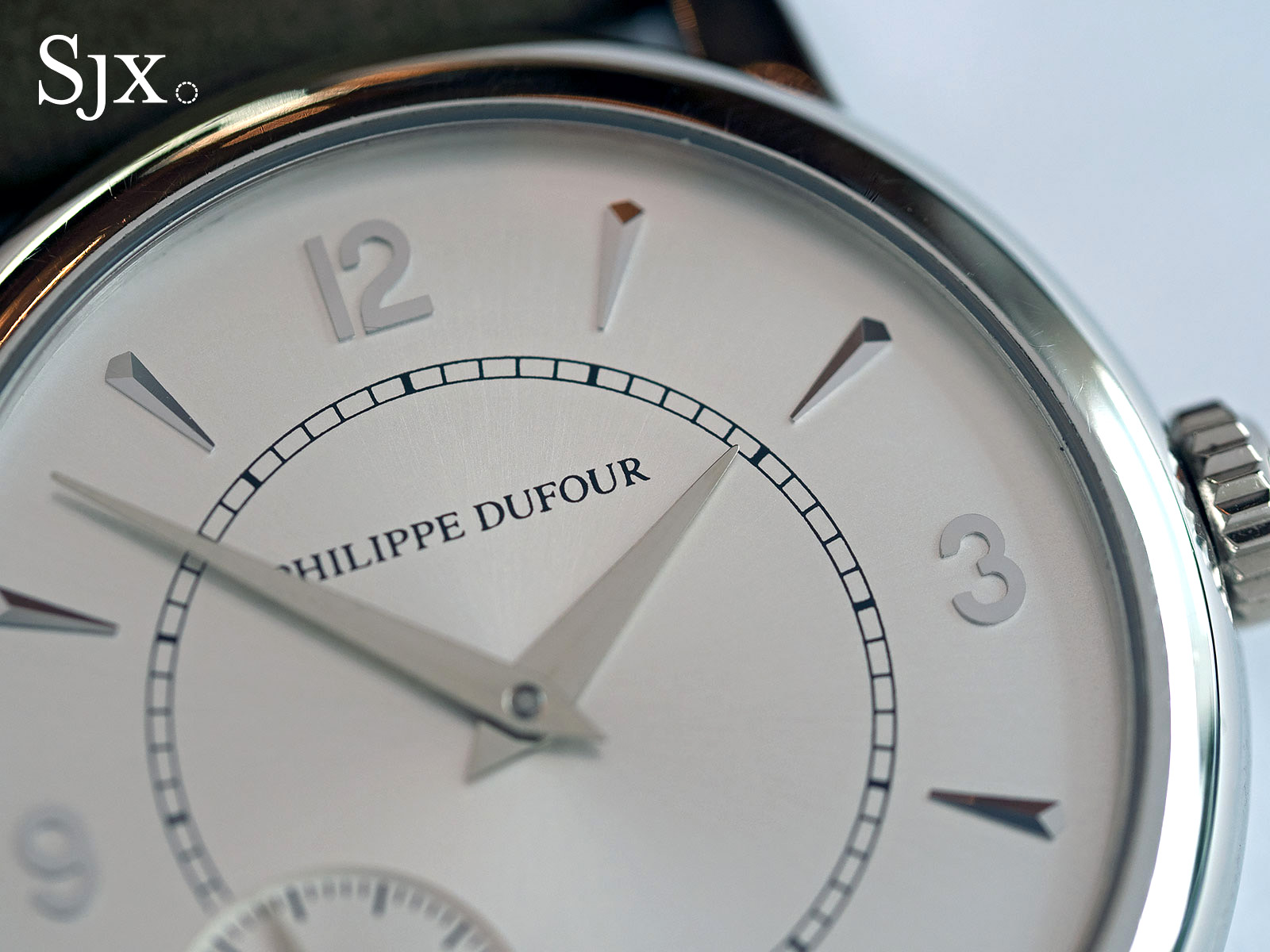
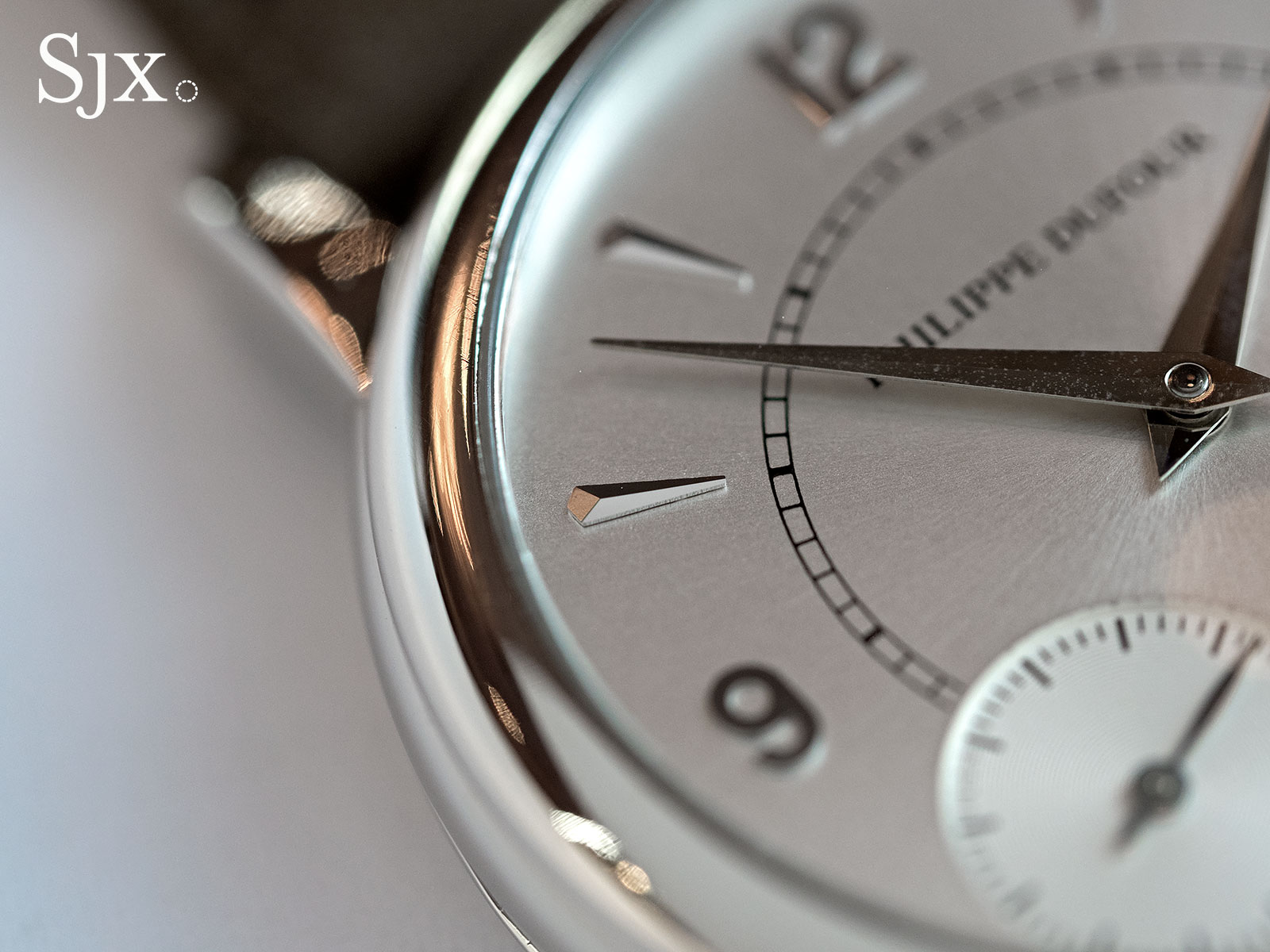
Conceived by Dufour as a wristwatch version of double regulator pocket watches made by students at the Vallee de Joux watch school, the Duality was the forerunner of similarly equipped watches today made by Greubel Forsey, MB&F and so on.
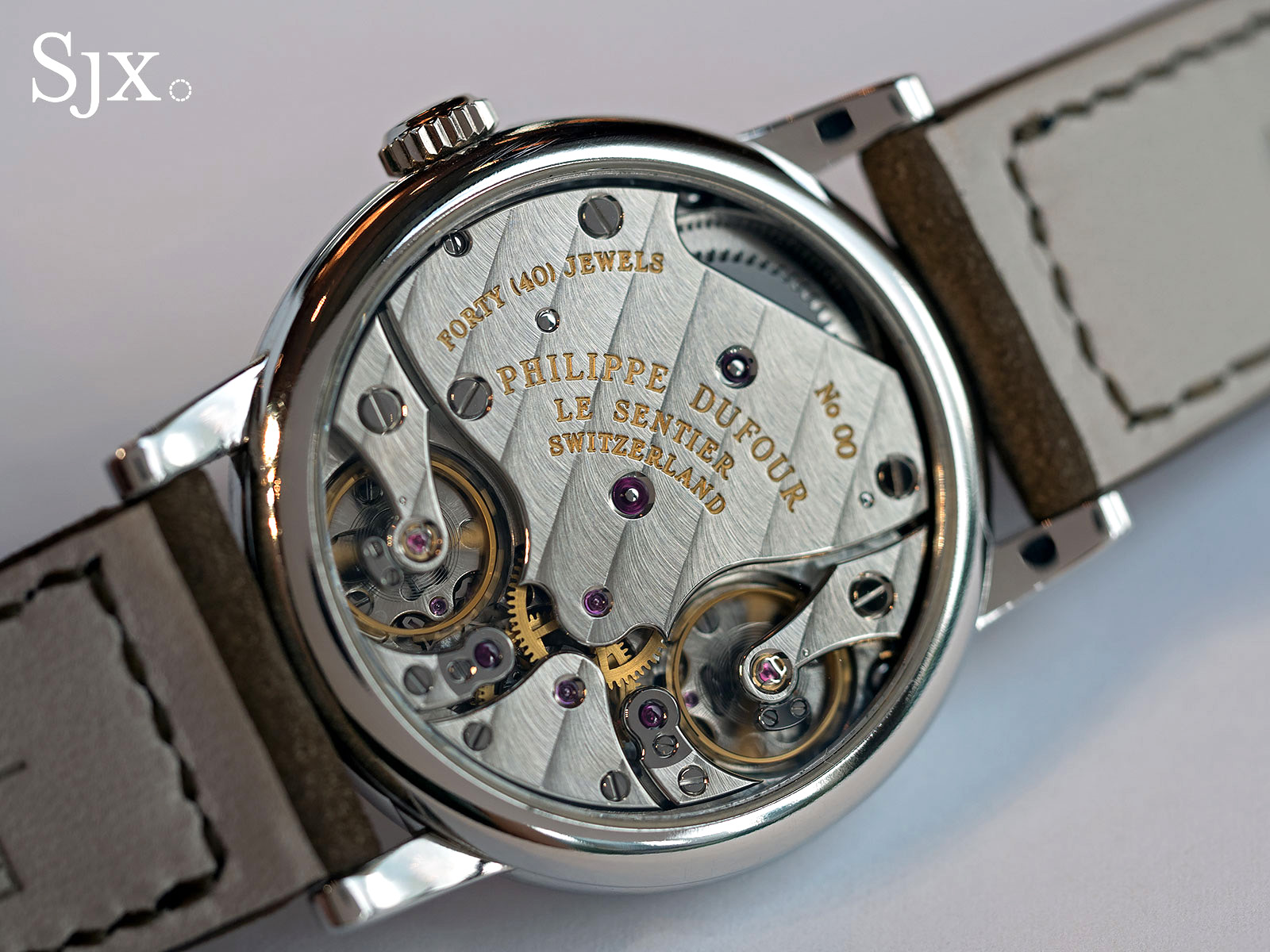
It is, however, completely distinct from the F.P. Journe Resonance, the most famous of the double regulator wristwatches. While Francois-Paul Journe’s creation relies on resonance between two oscillating bodies in sync, the twin balance wheels in the Duality have a tangible connection in the form of a differential that averages out the rate of the two.
What makes it quite remarkable is the size – the Duality is just 34mm in diameter, a feat considering what goes on inside.
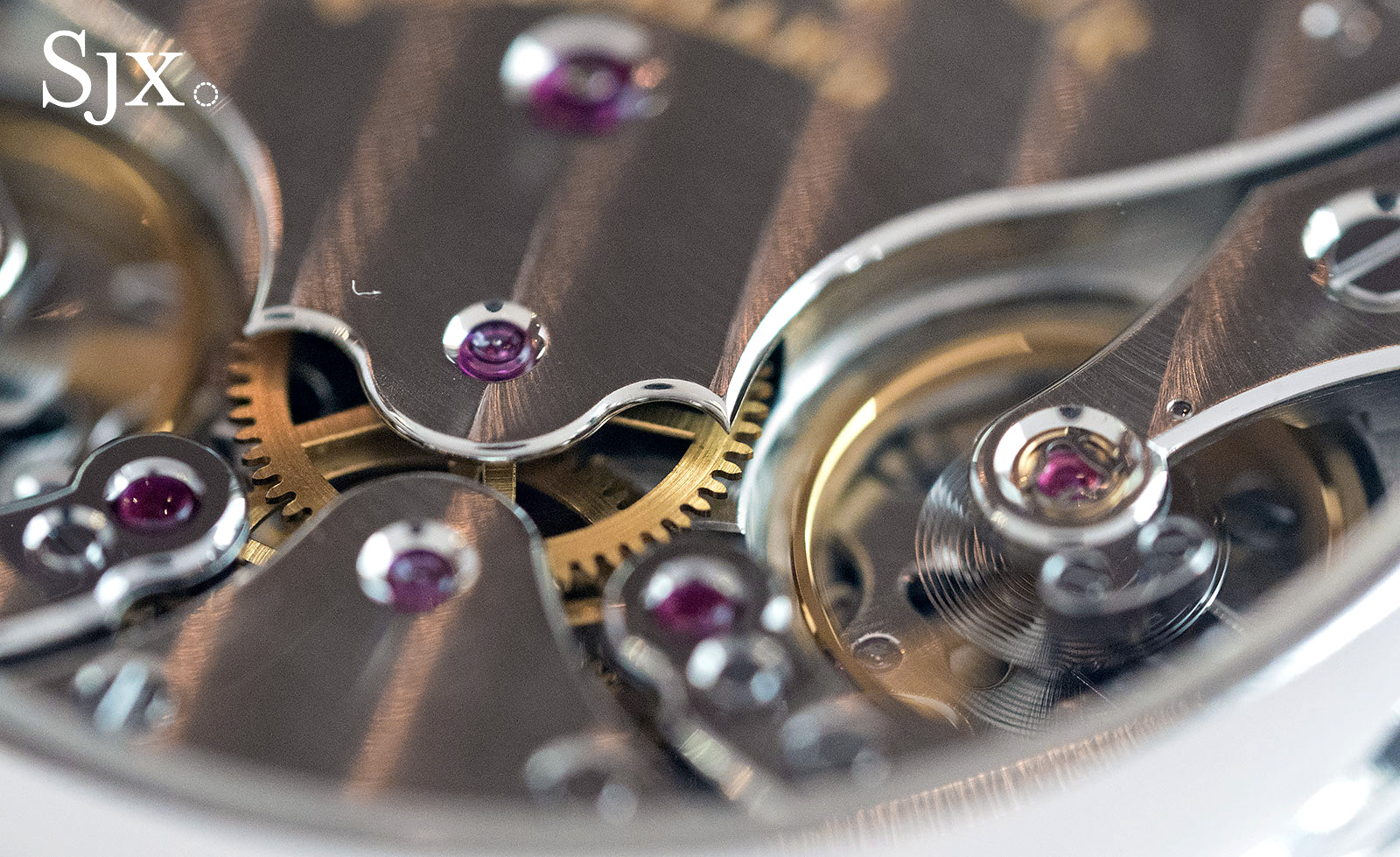
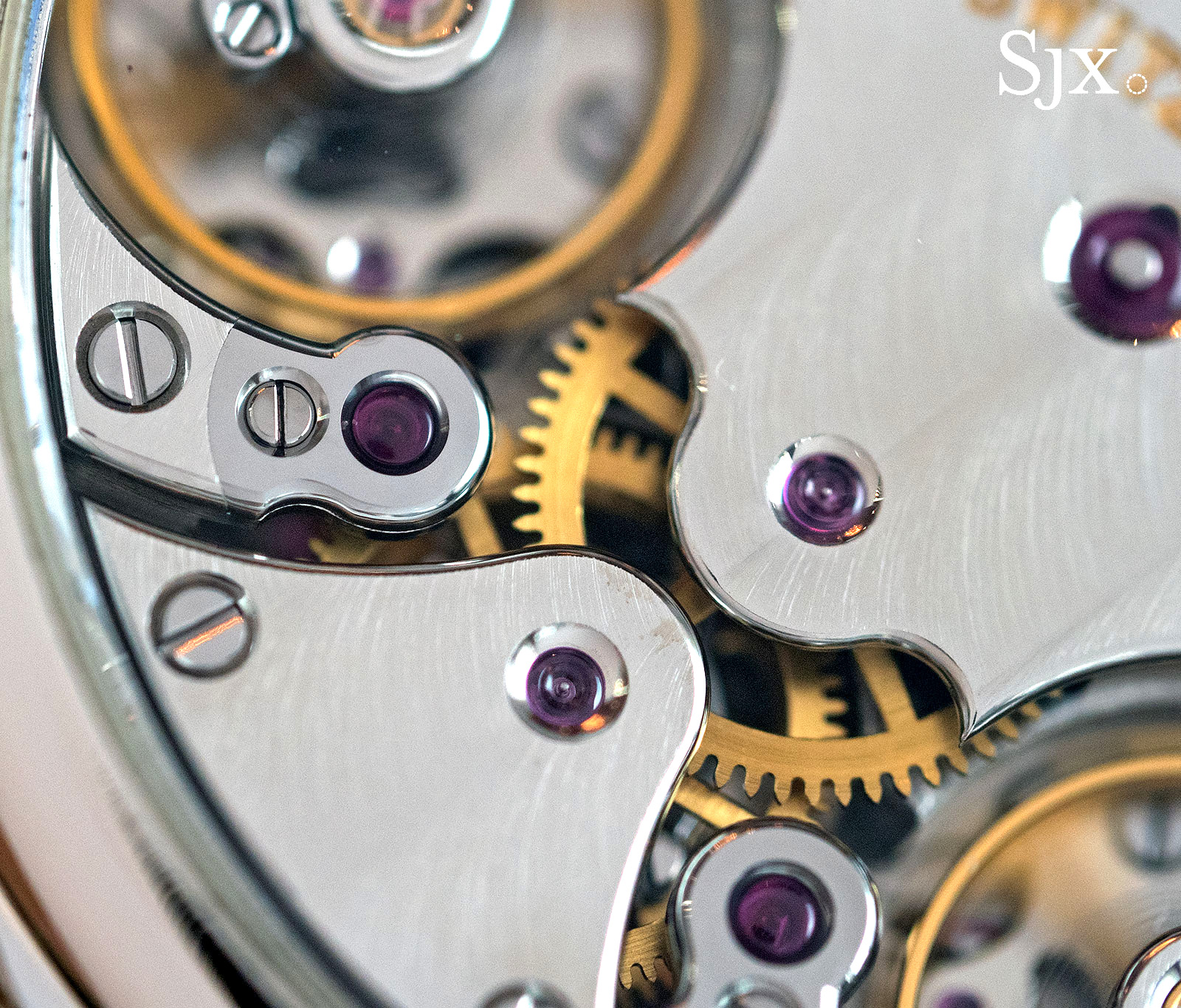
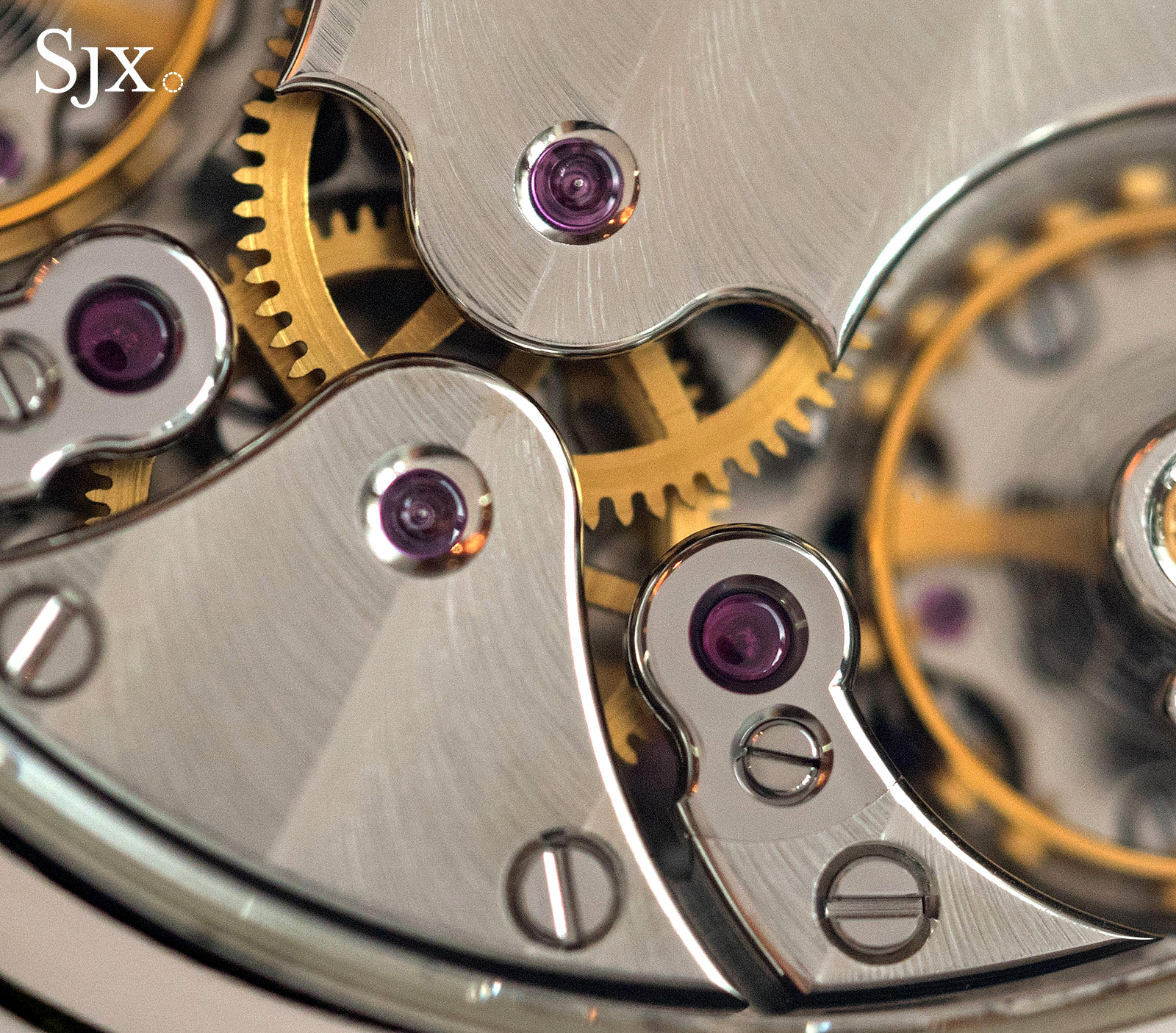
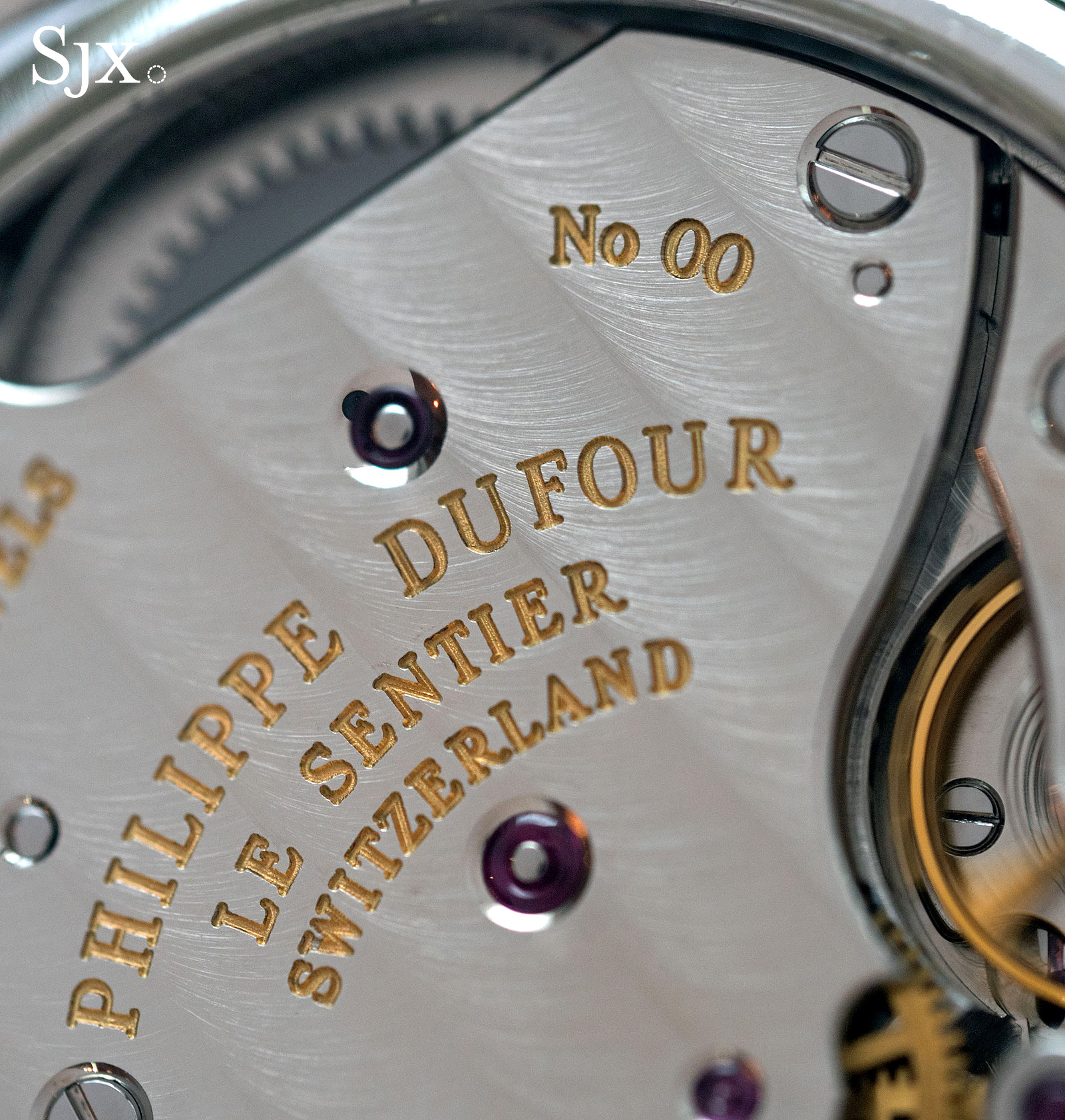
This platinum example is numbered “00”, the prototype of the series. This is estimated at US$200,000 to US$400,000.
Preview and auction information
The preview exhibition for the Winning Icons auction takes place October 20 to 26 at 450 Park Avenue, New York.
The auction is at 6pm on October 26 at the same location. Admission to the auction requires a ticket, which can be requested via email.
The full catalogue is available online here.
Back to top.

